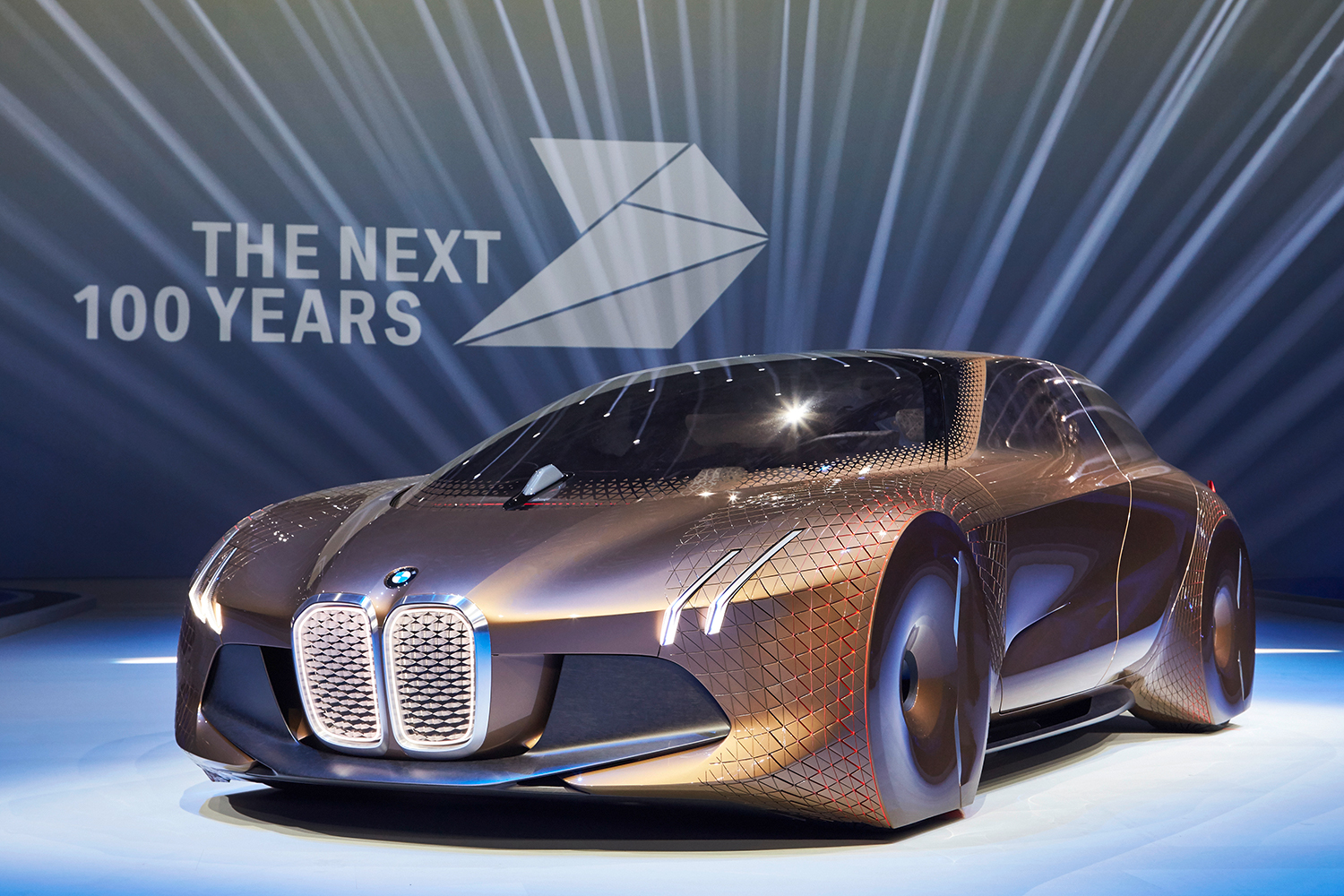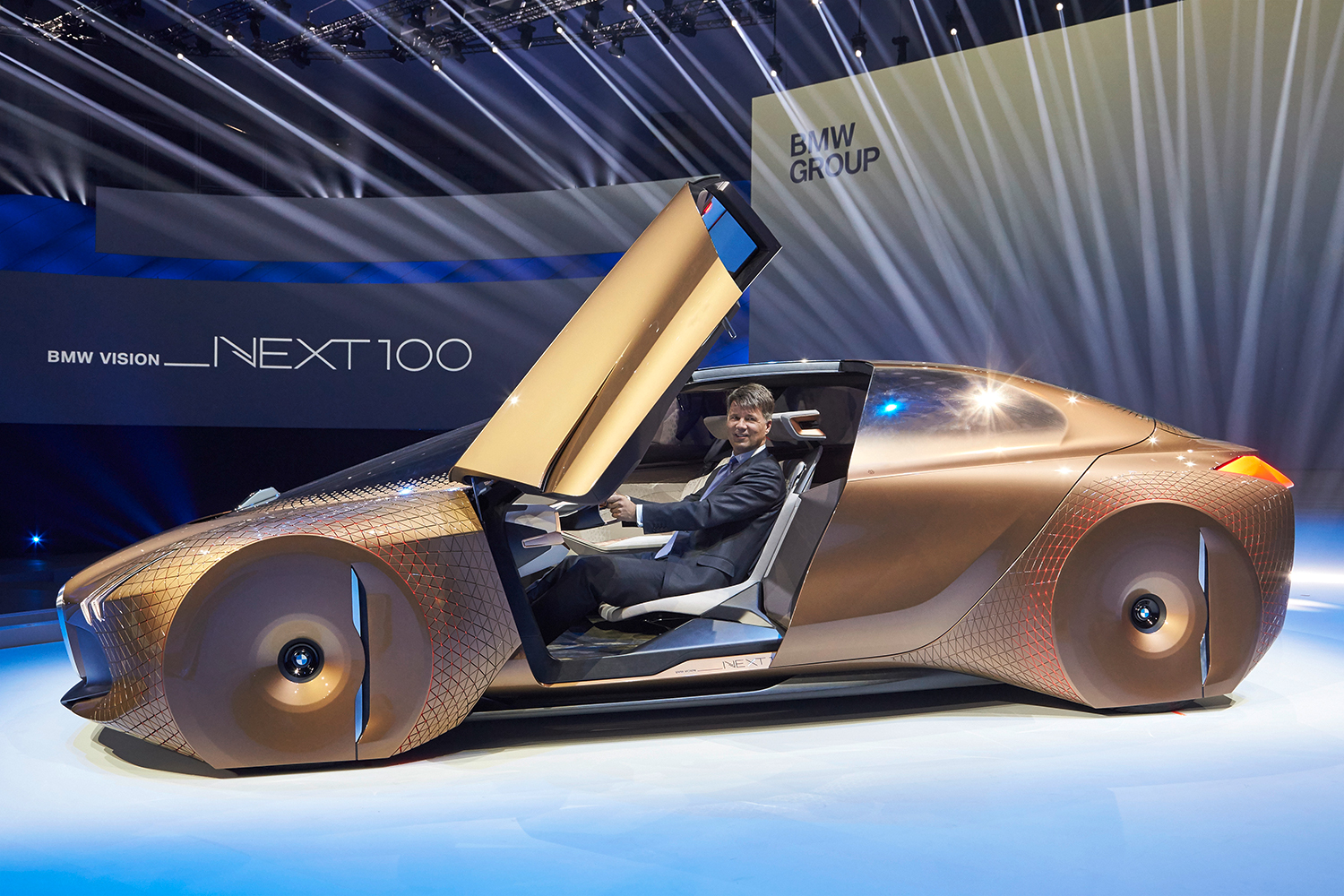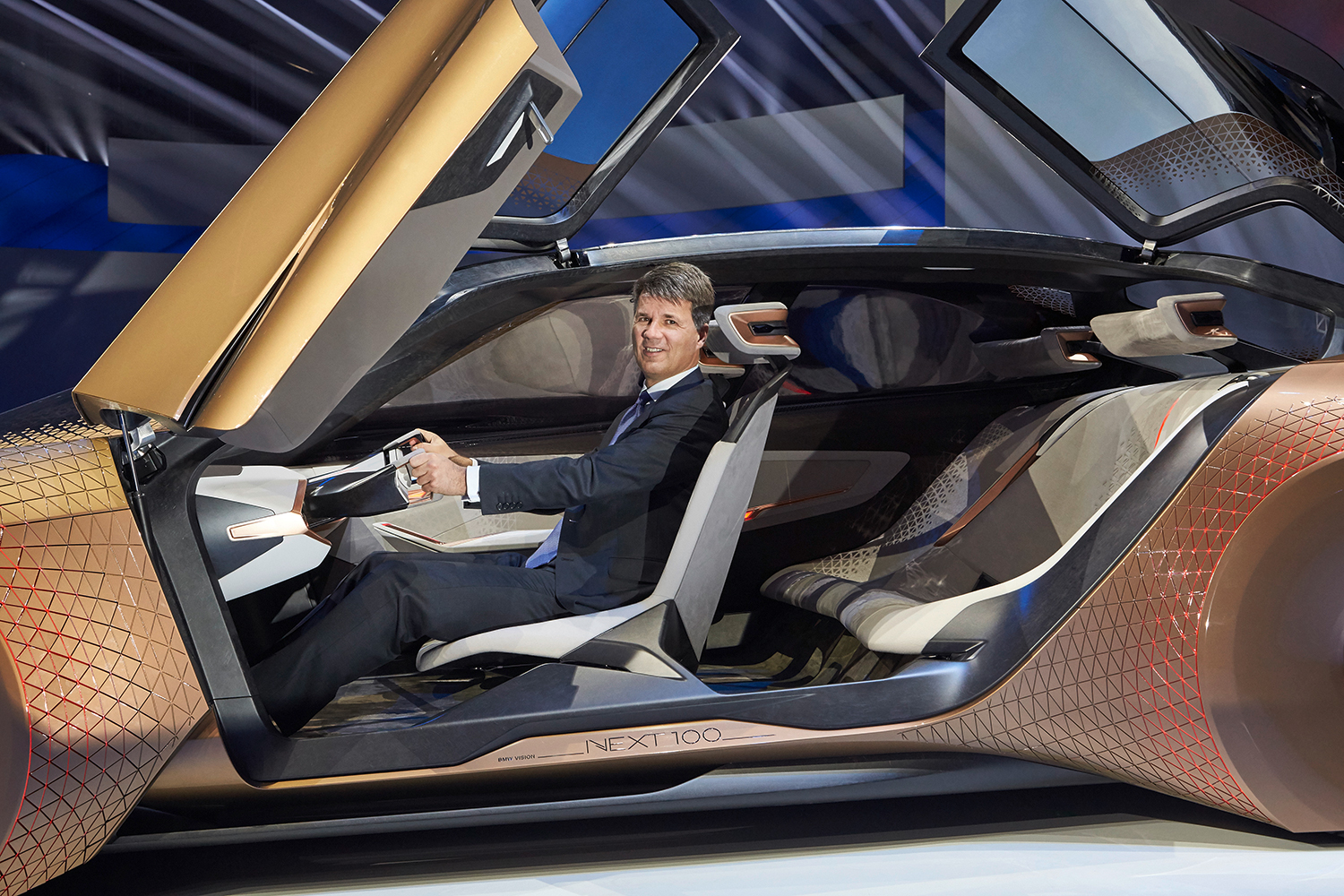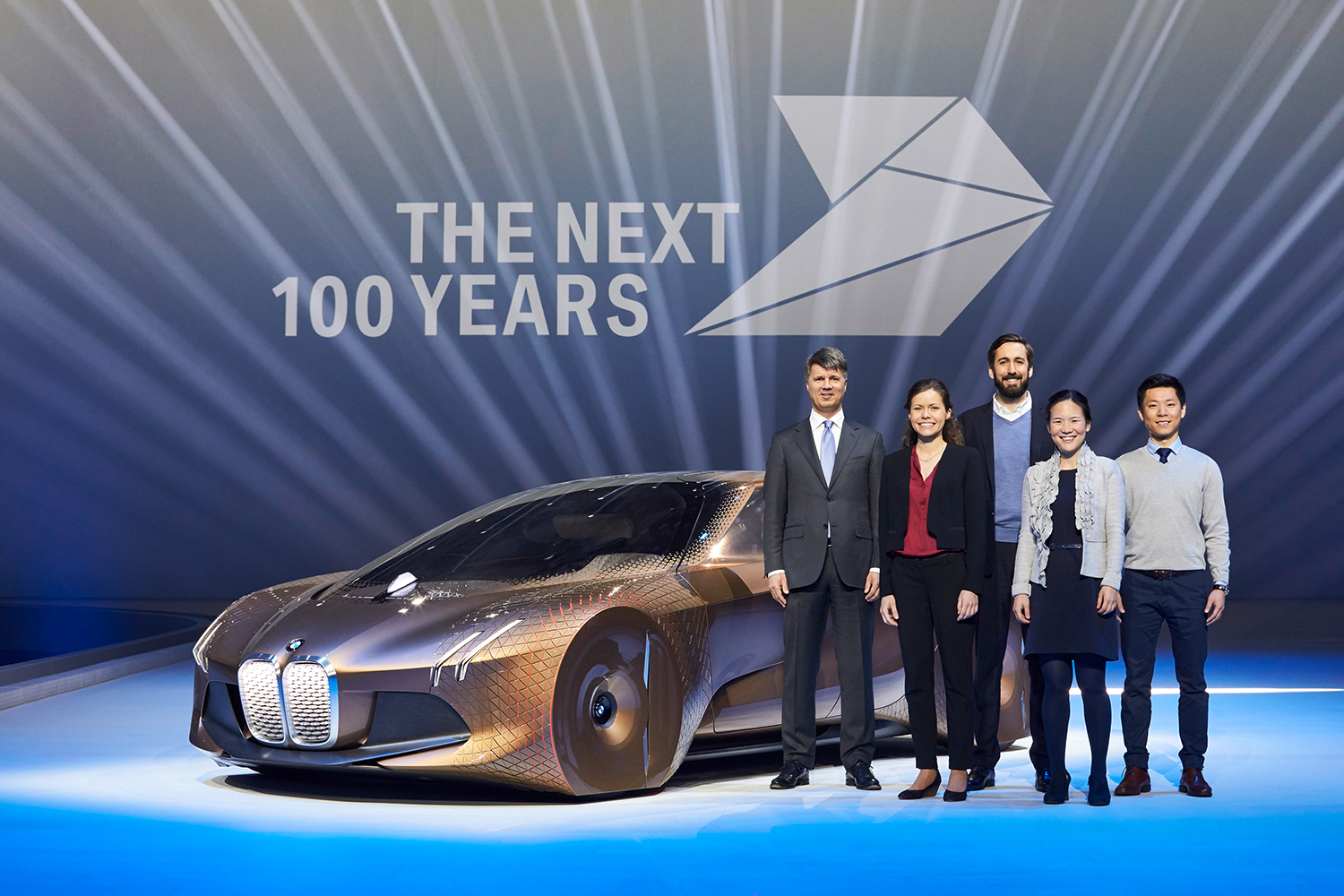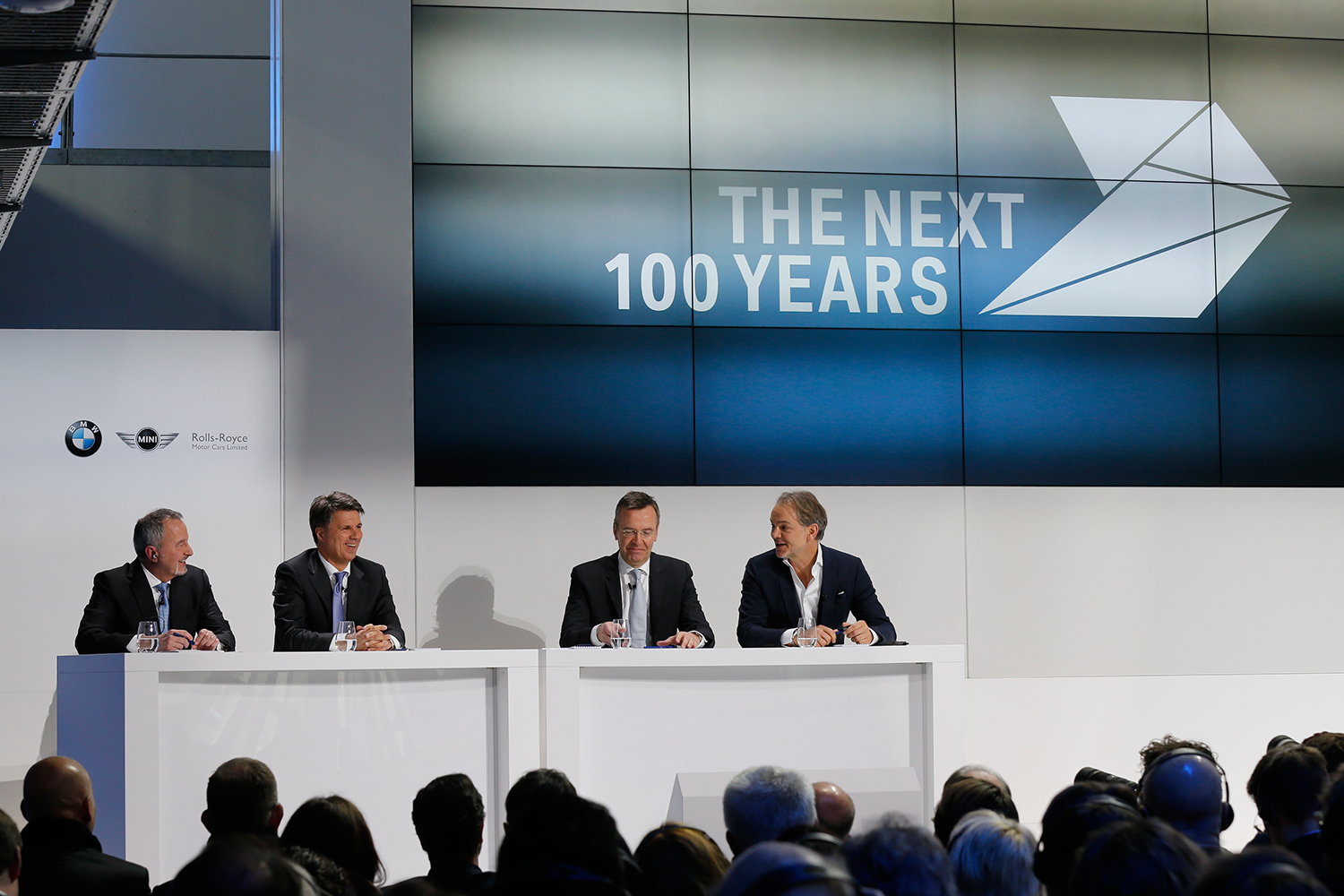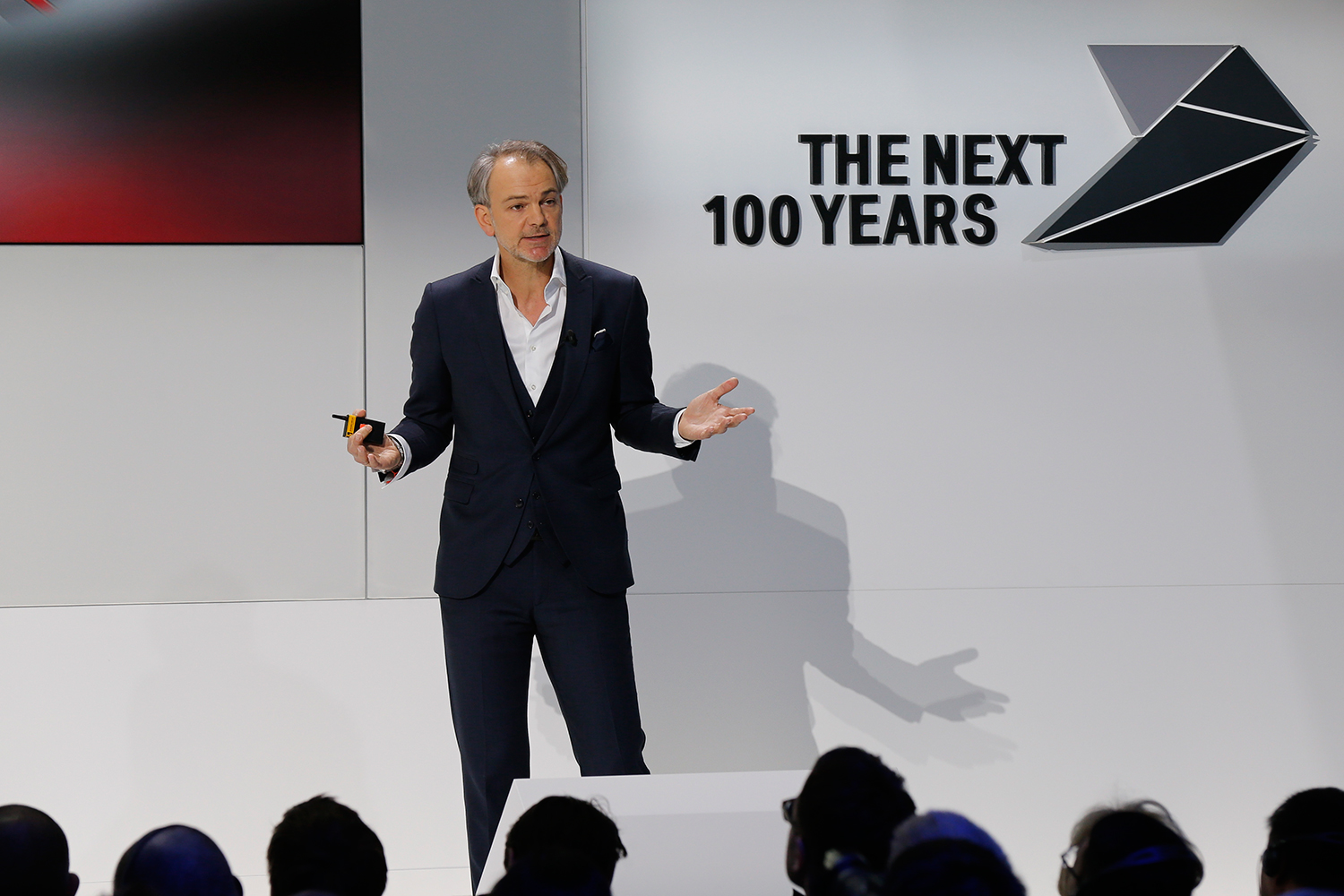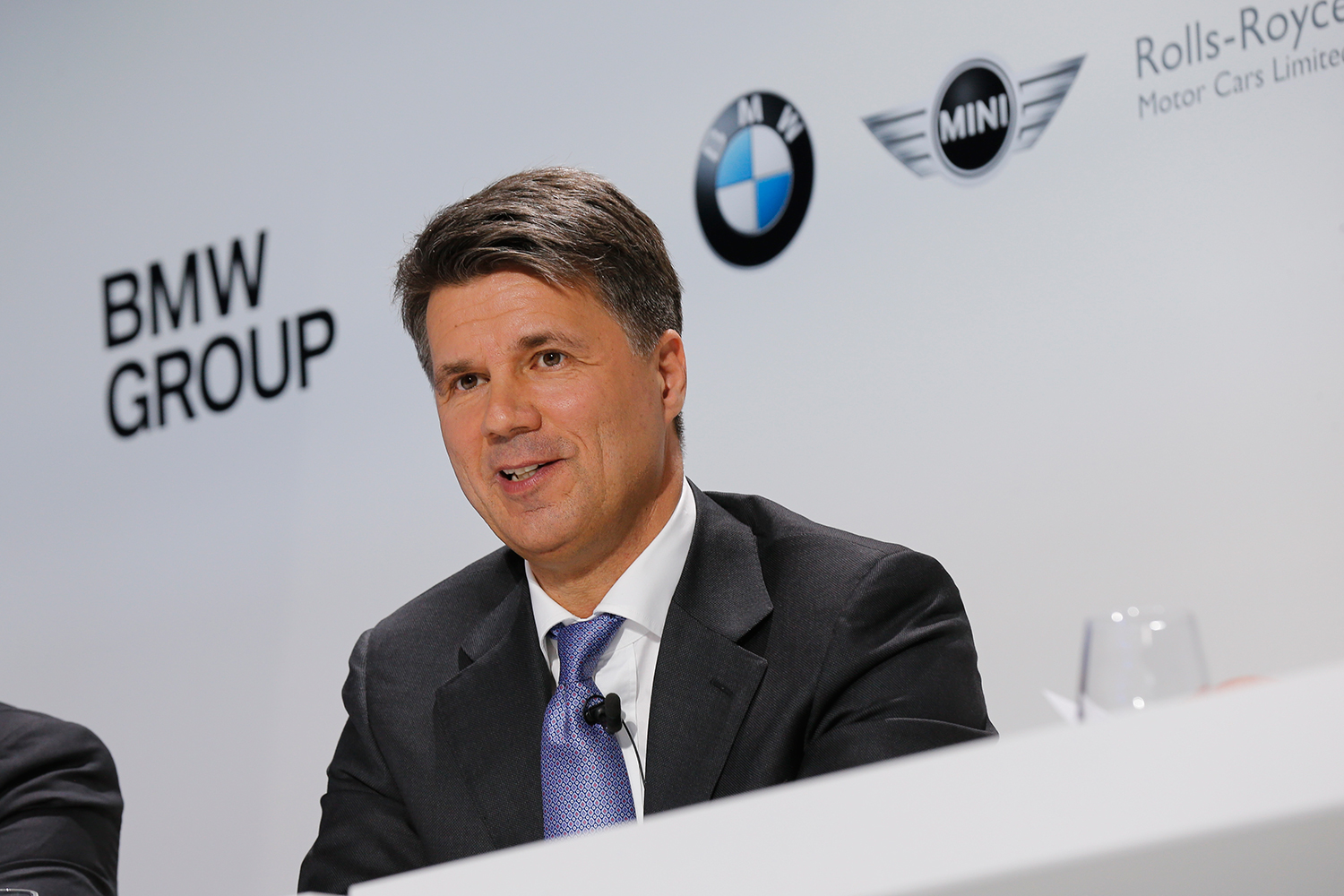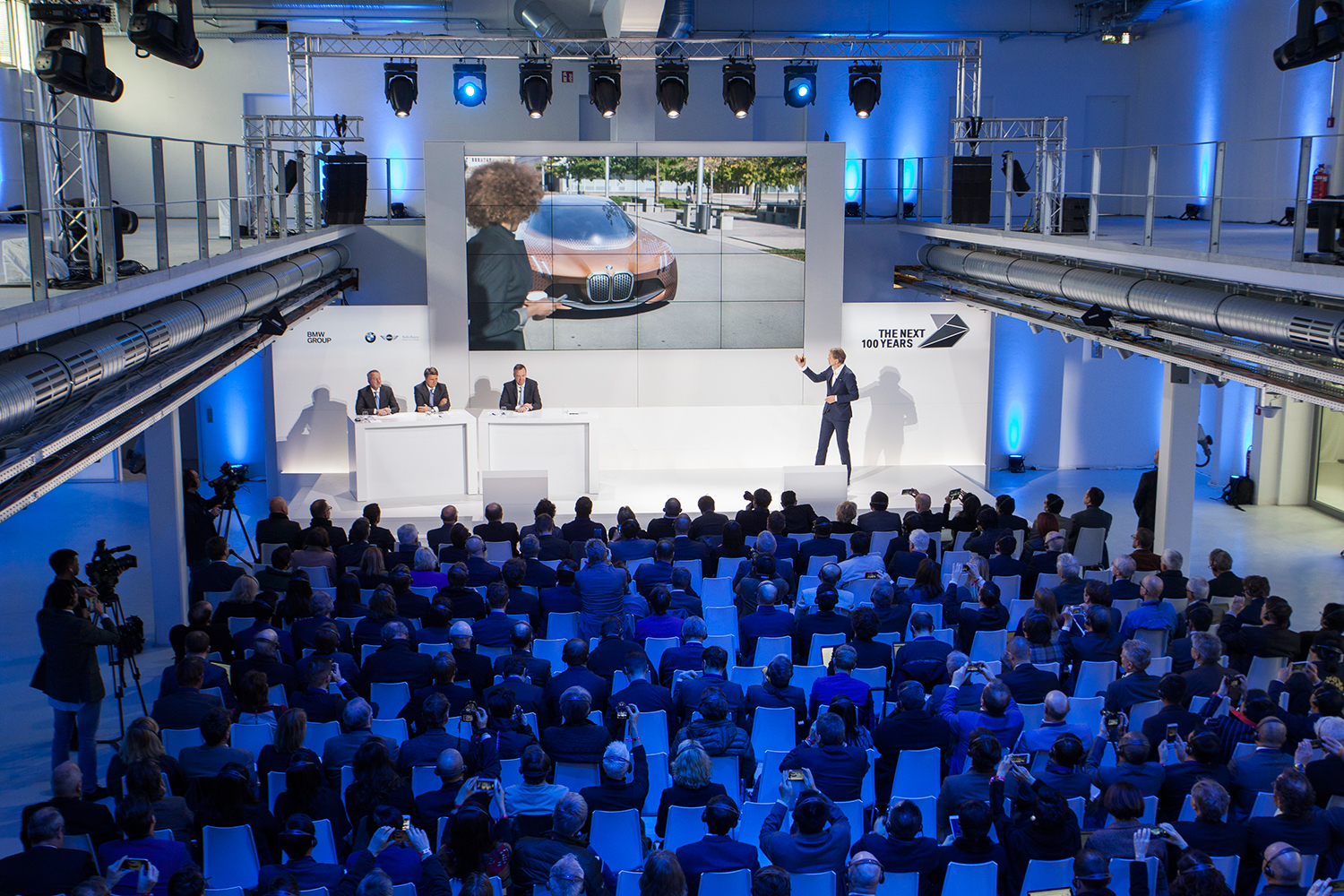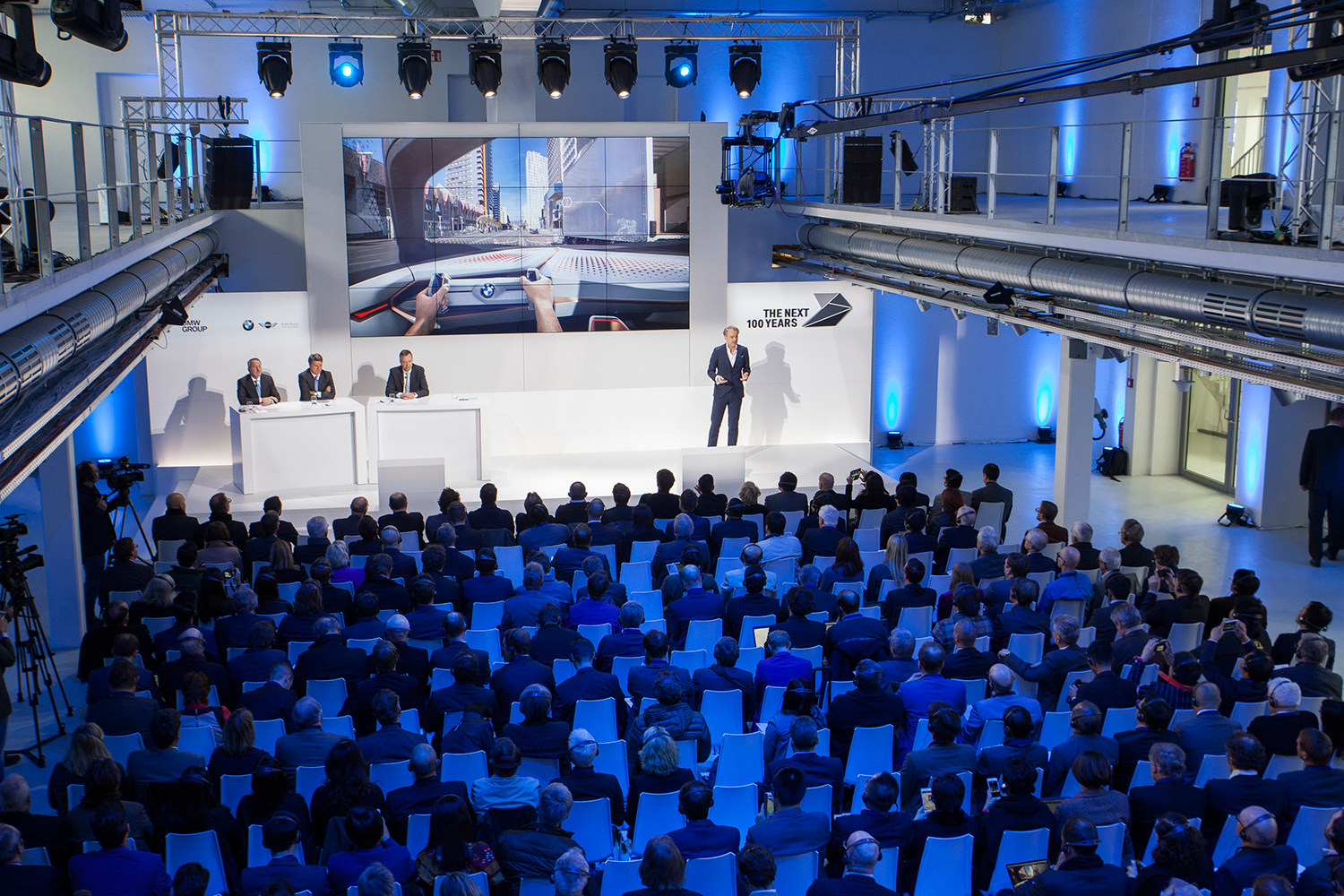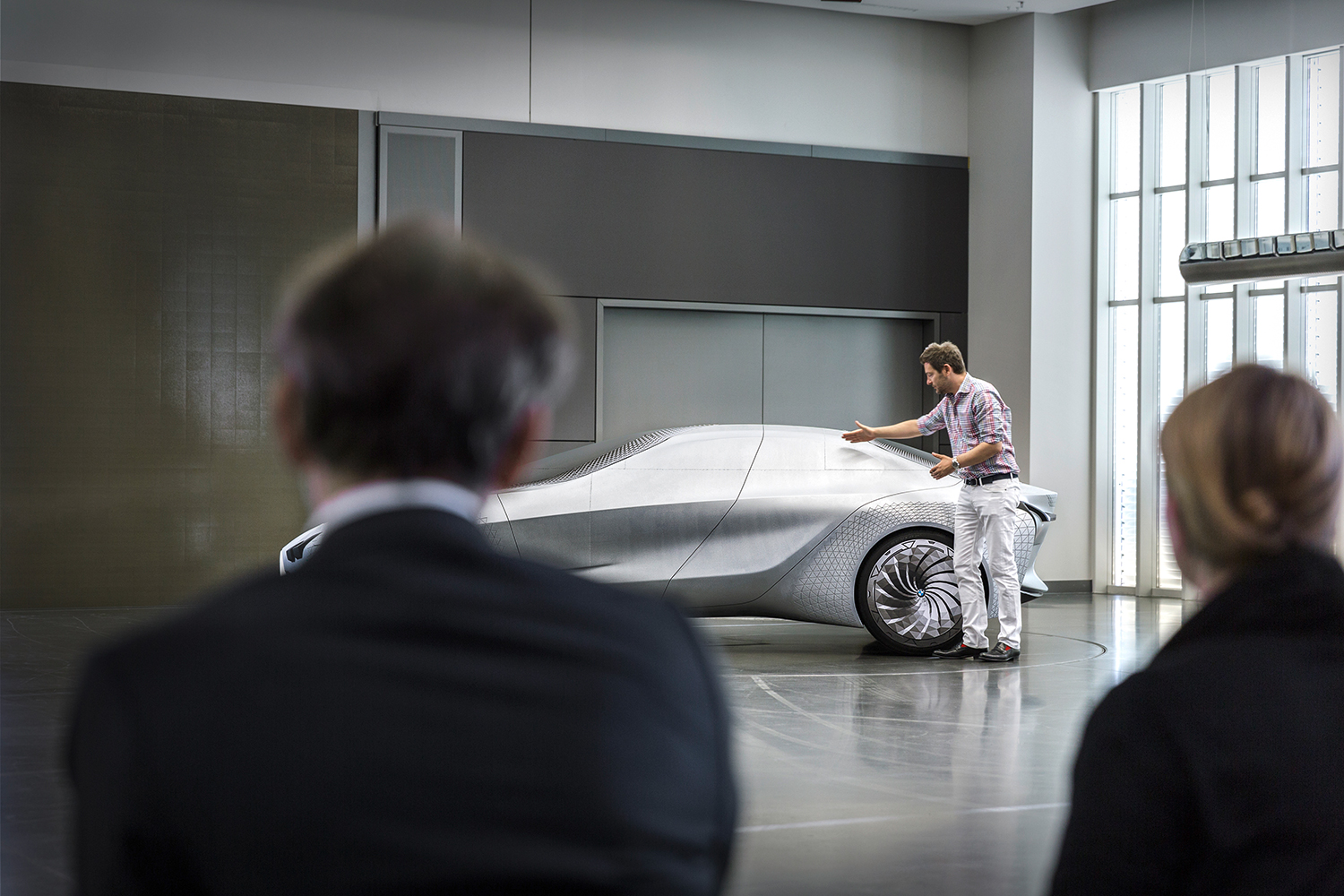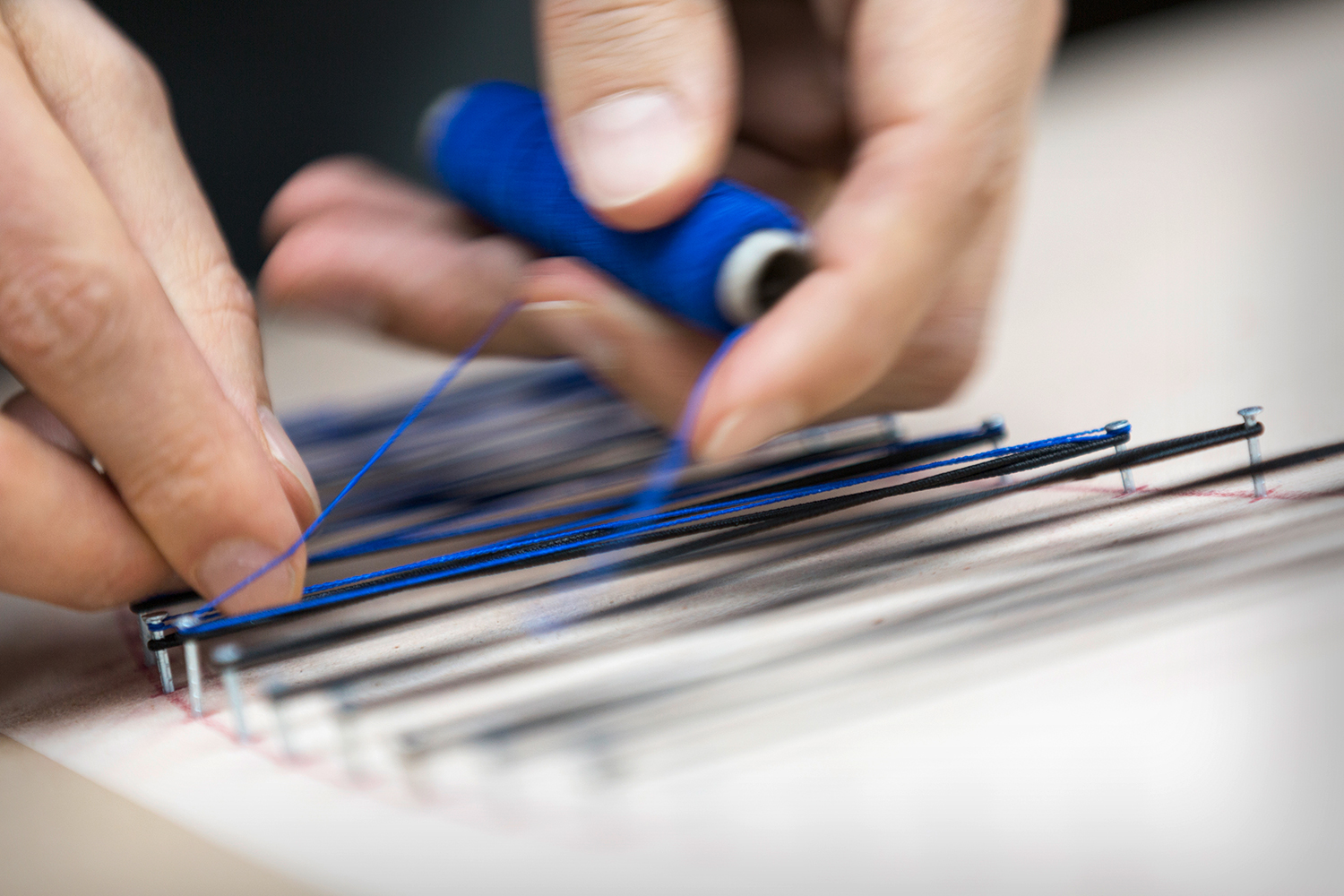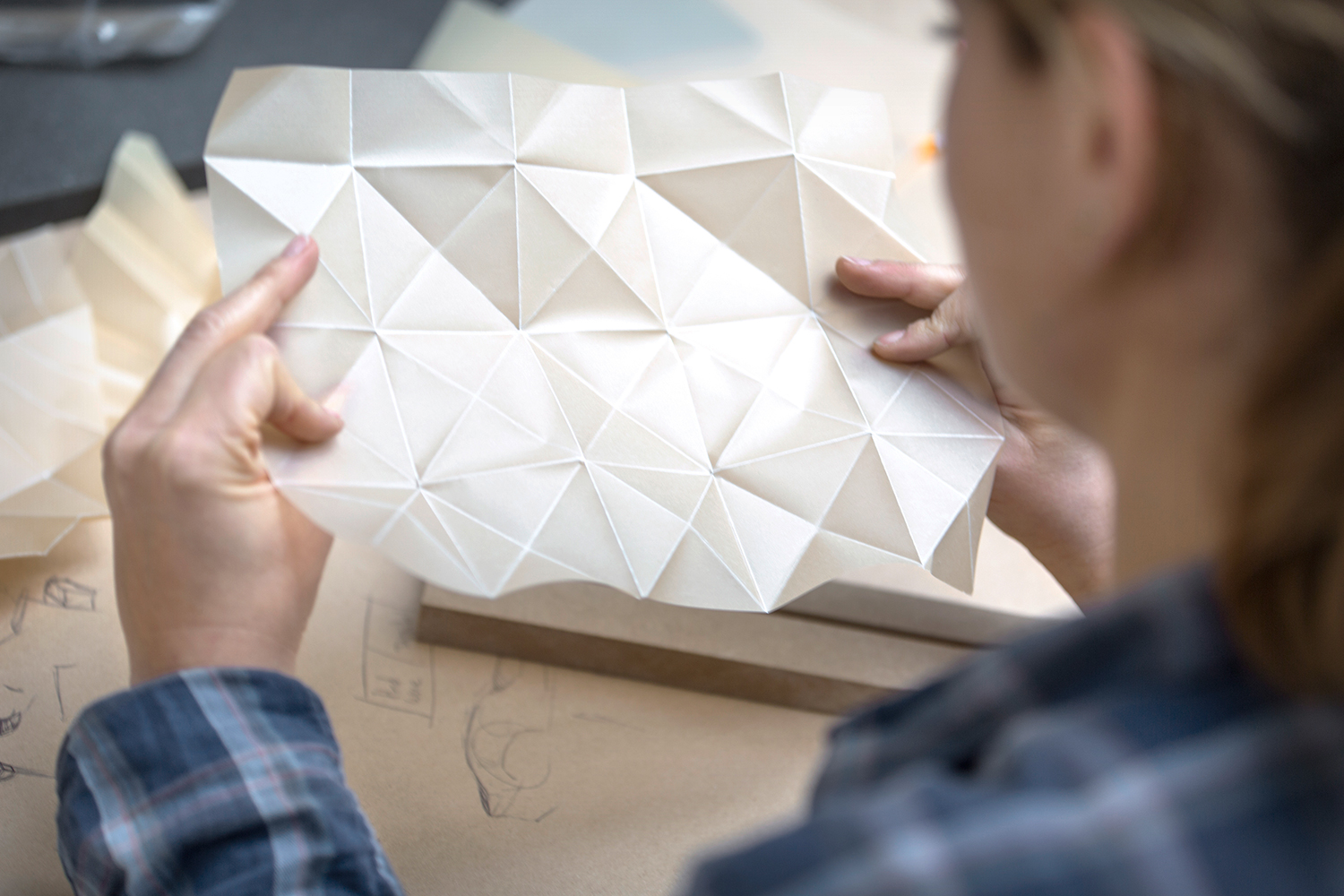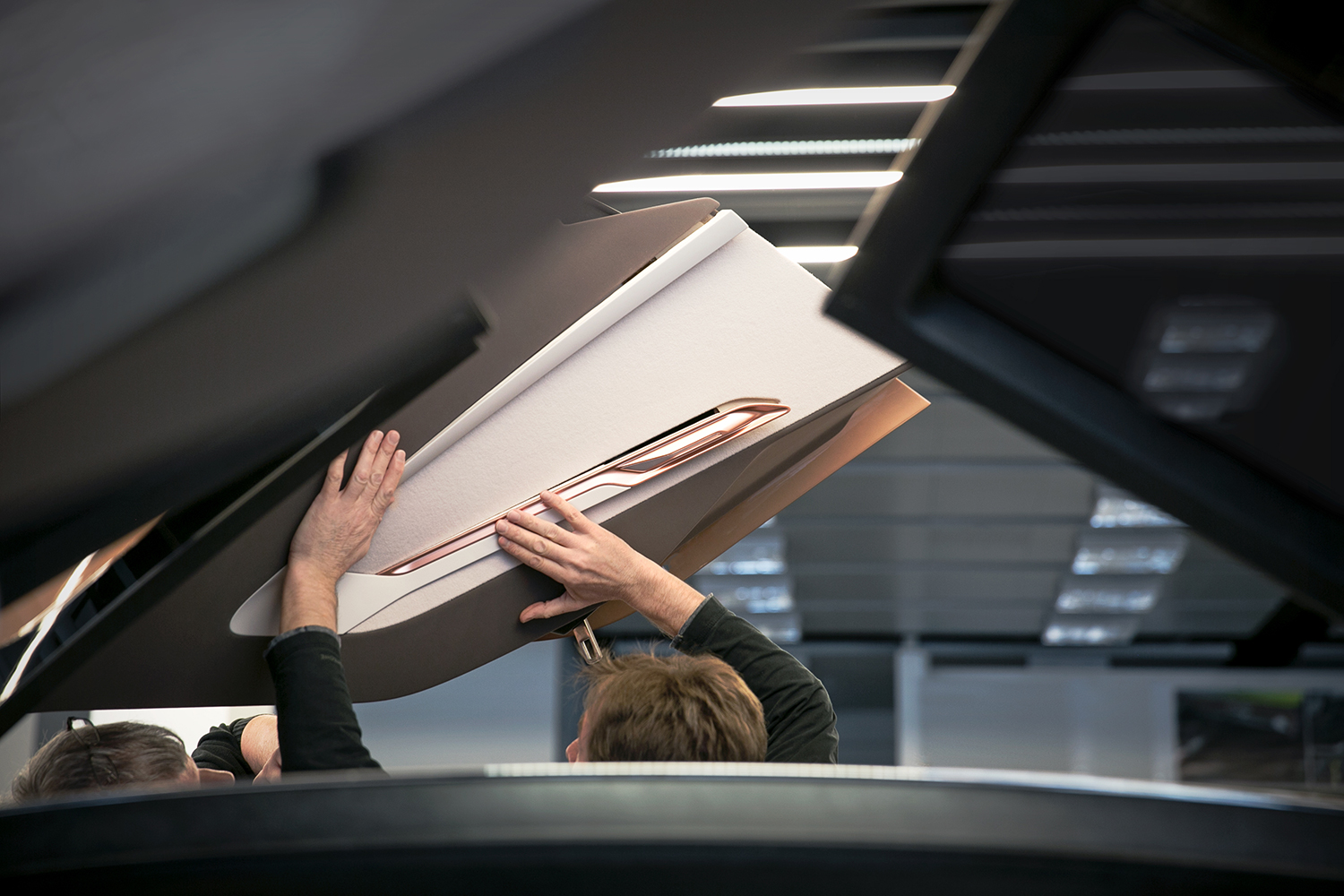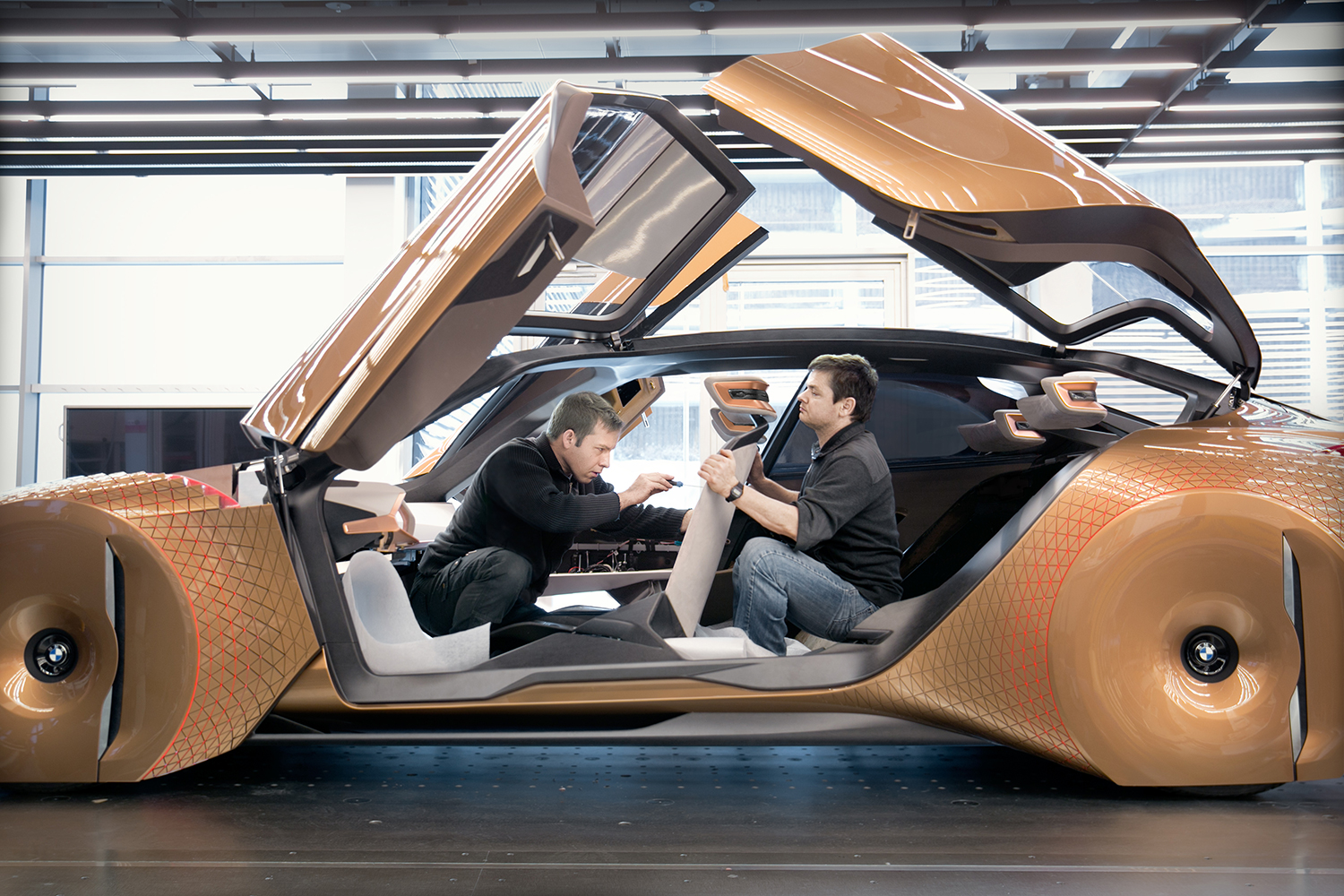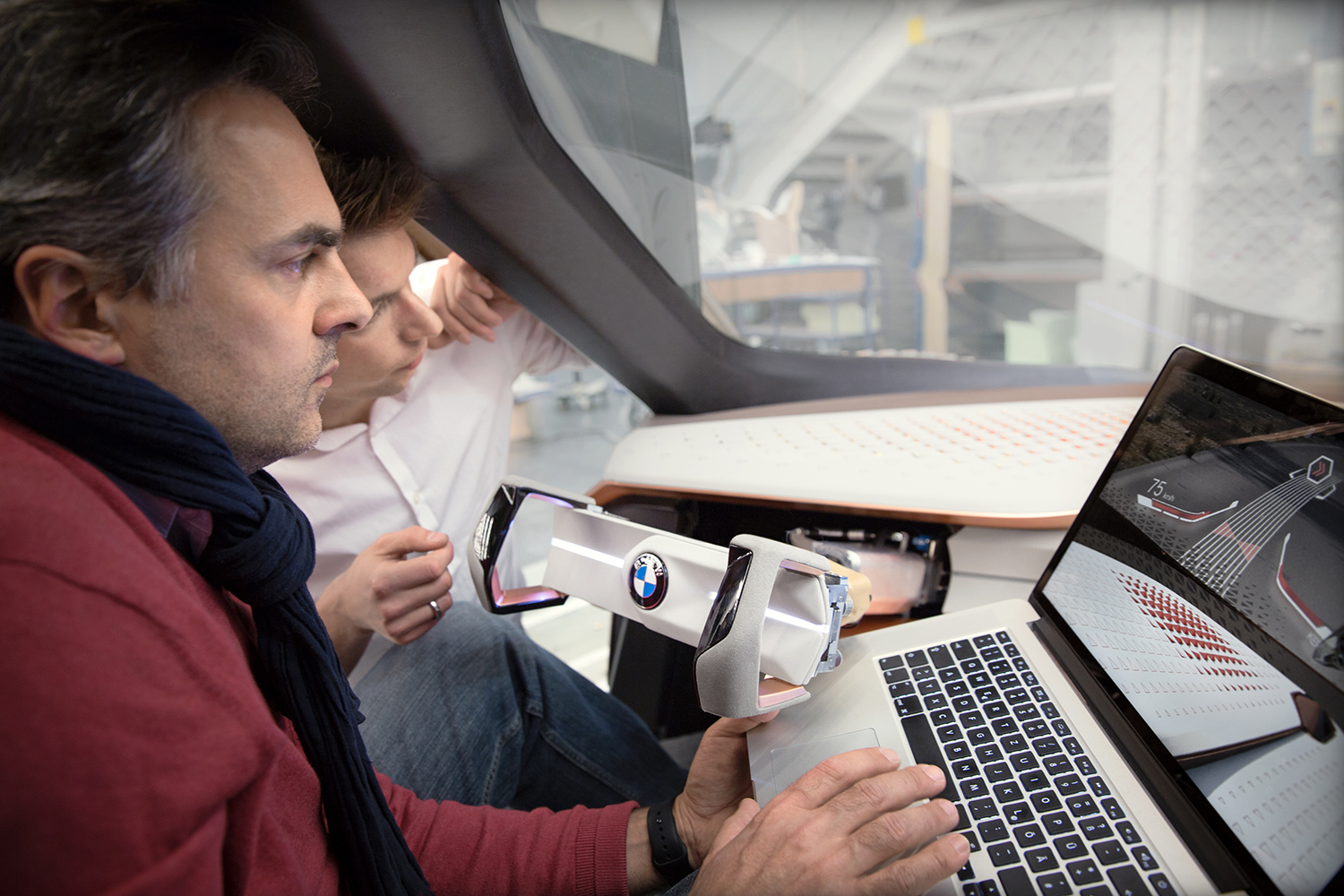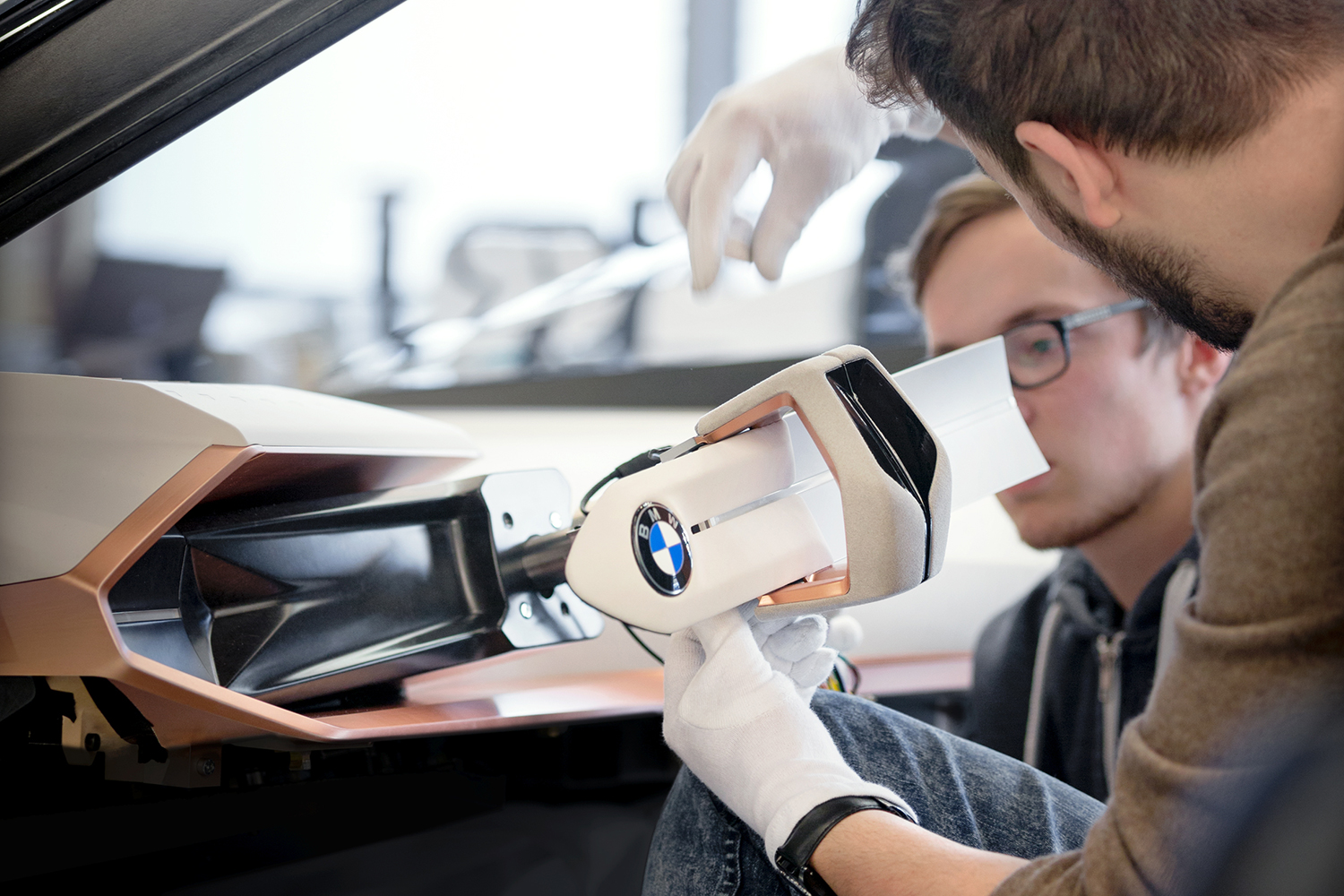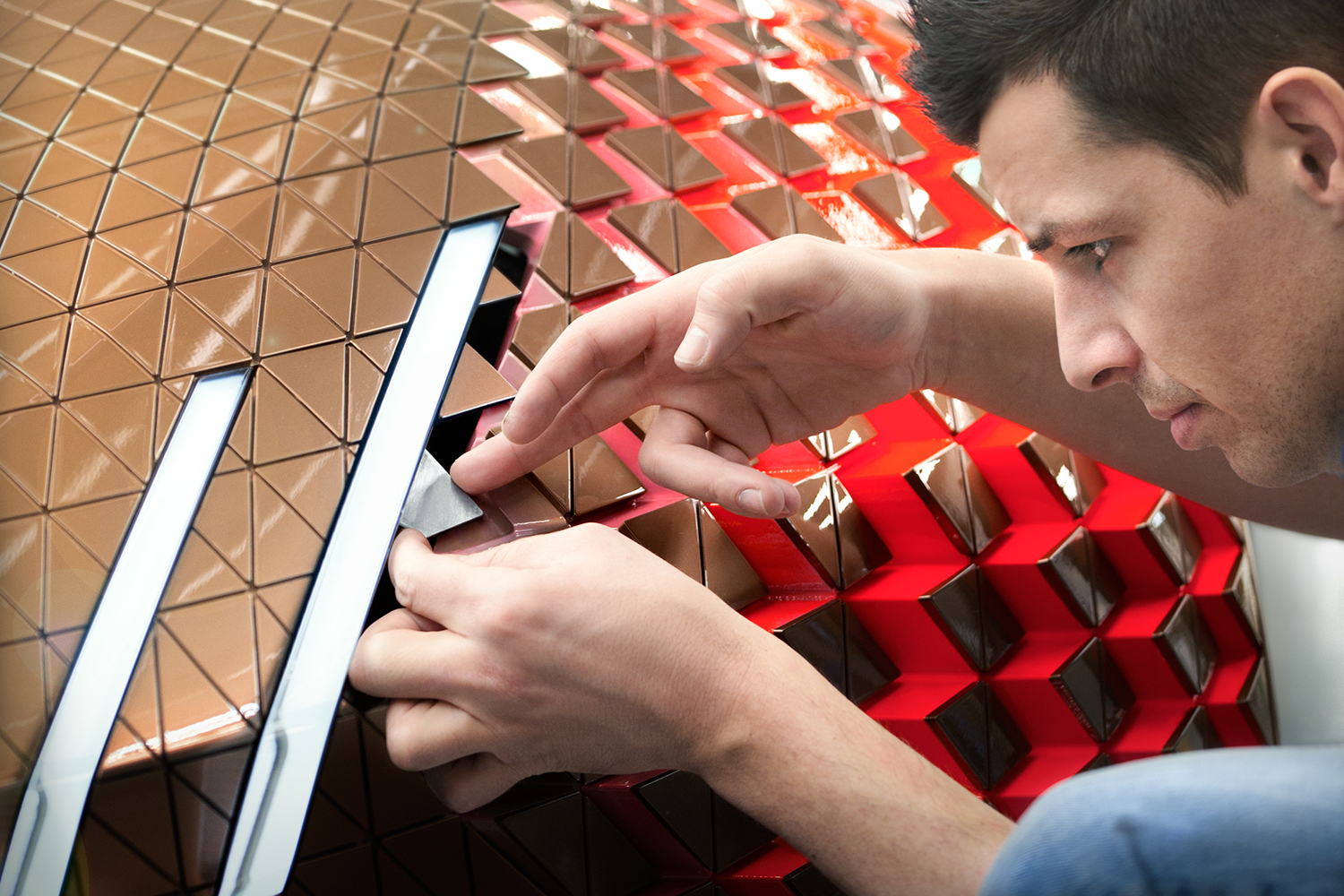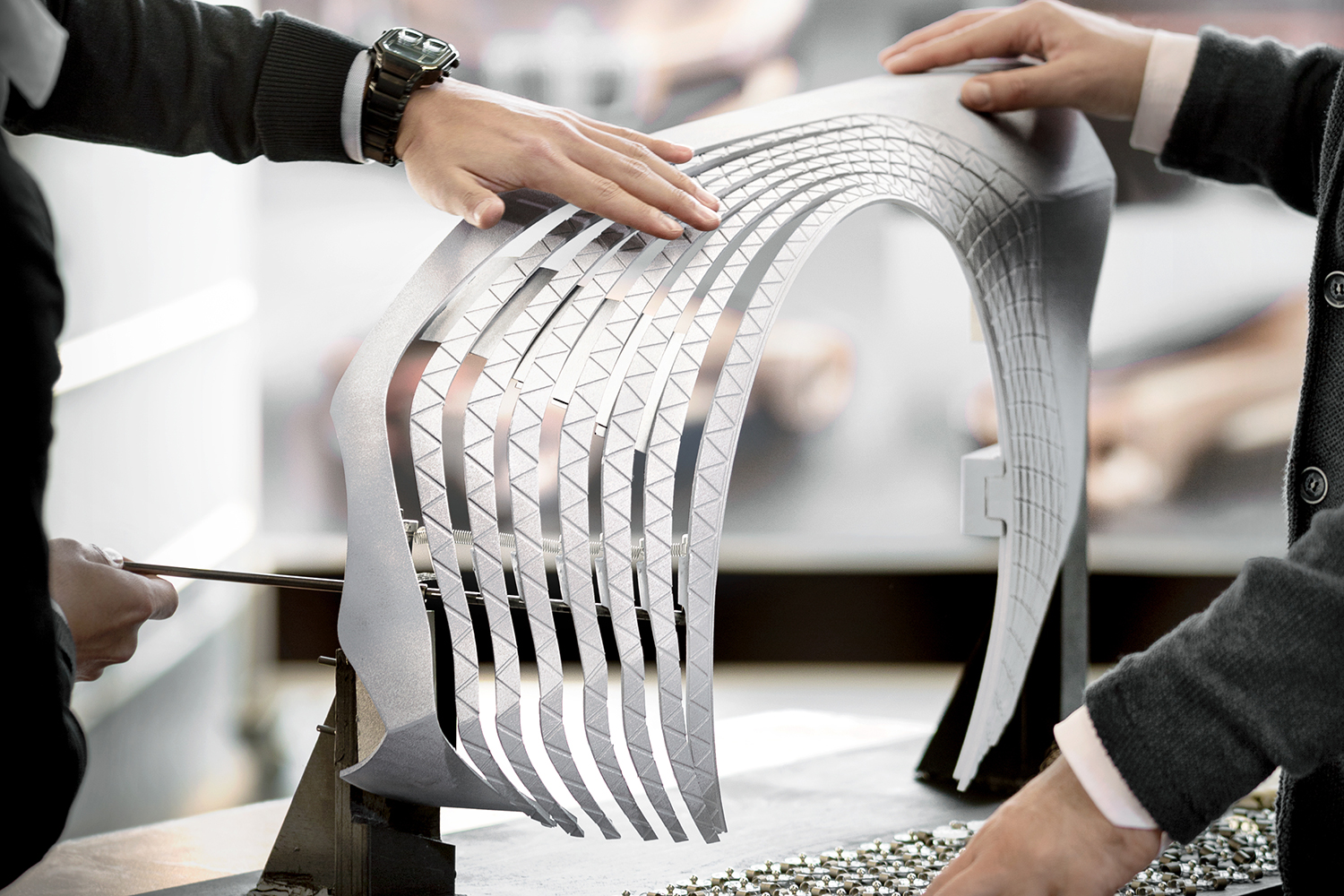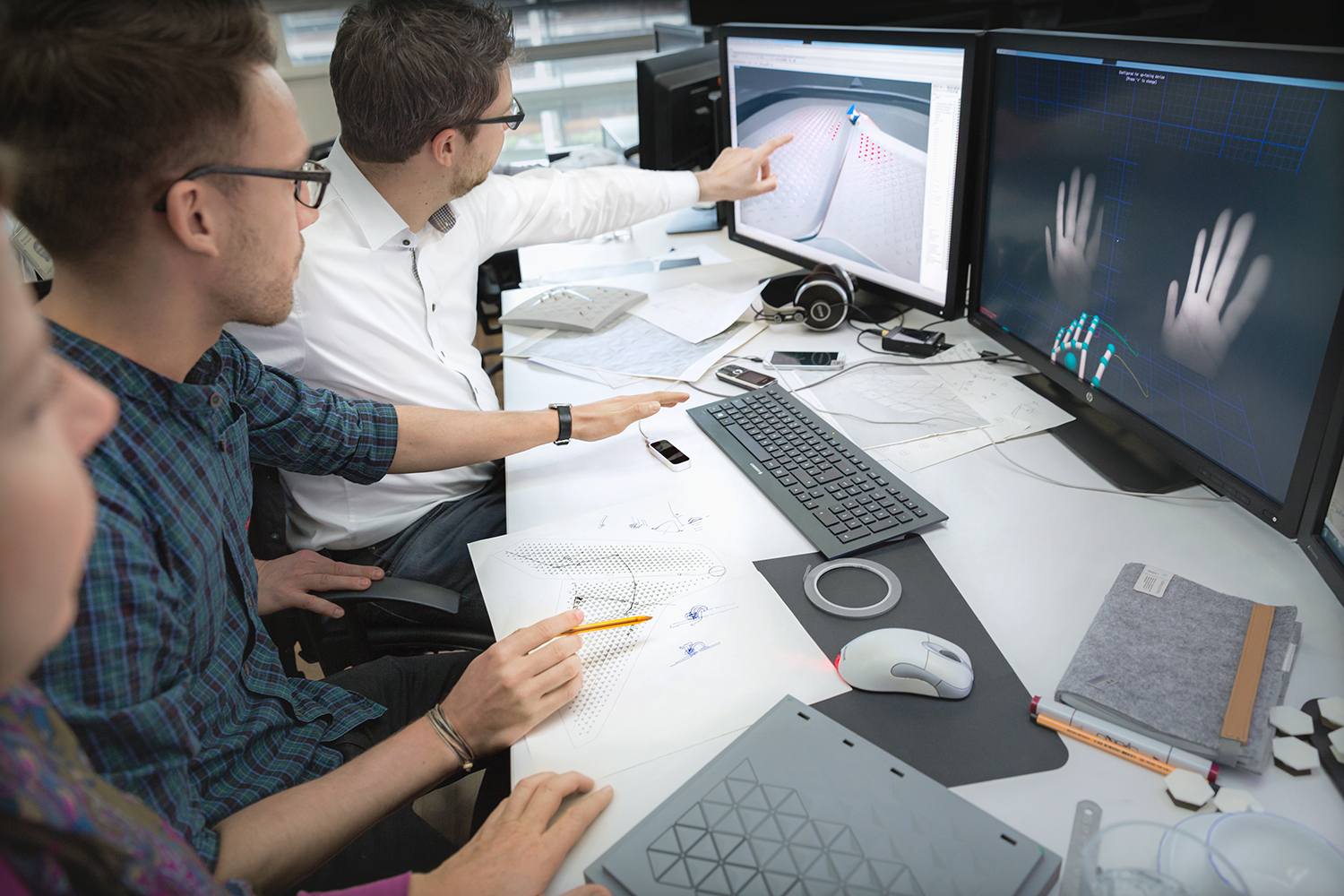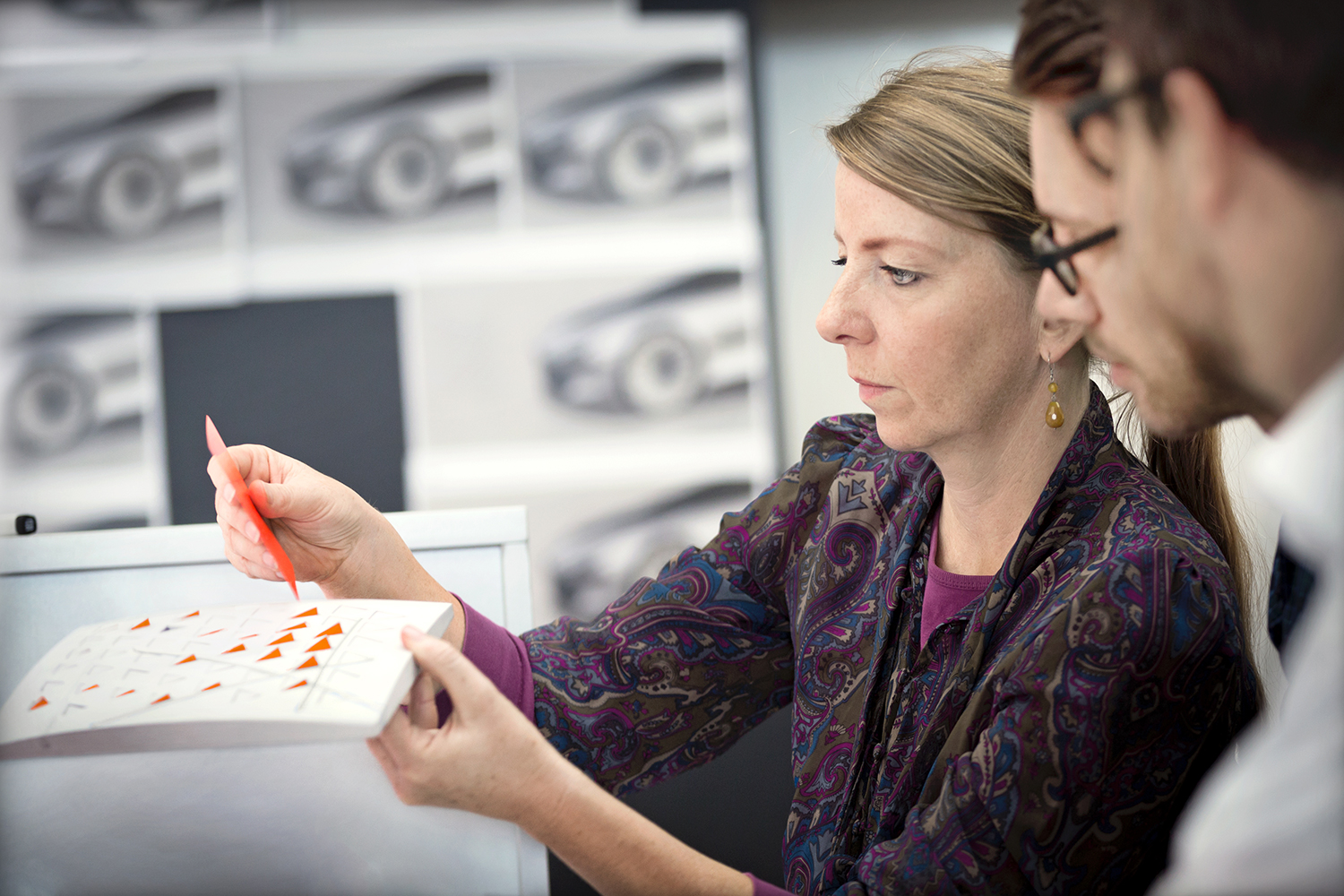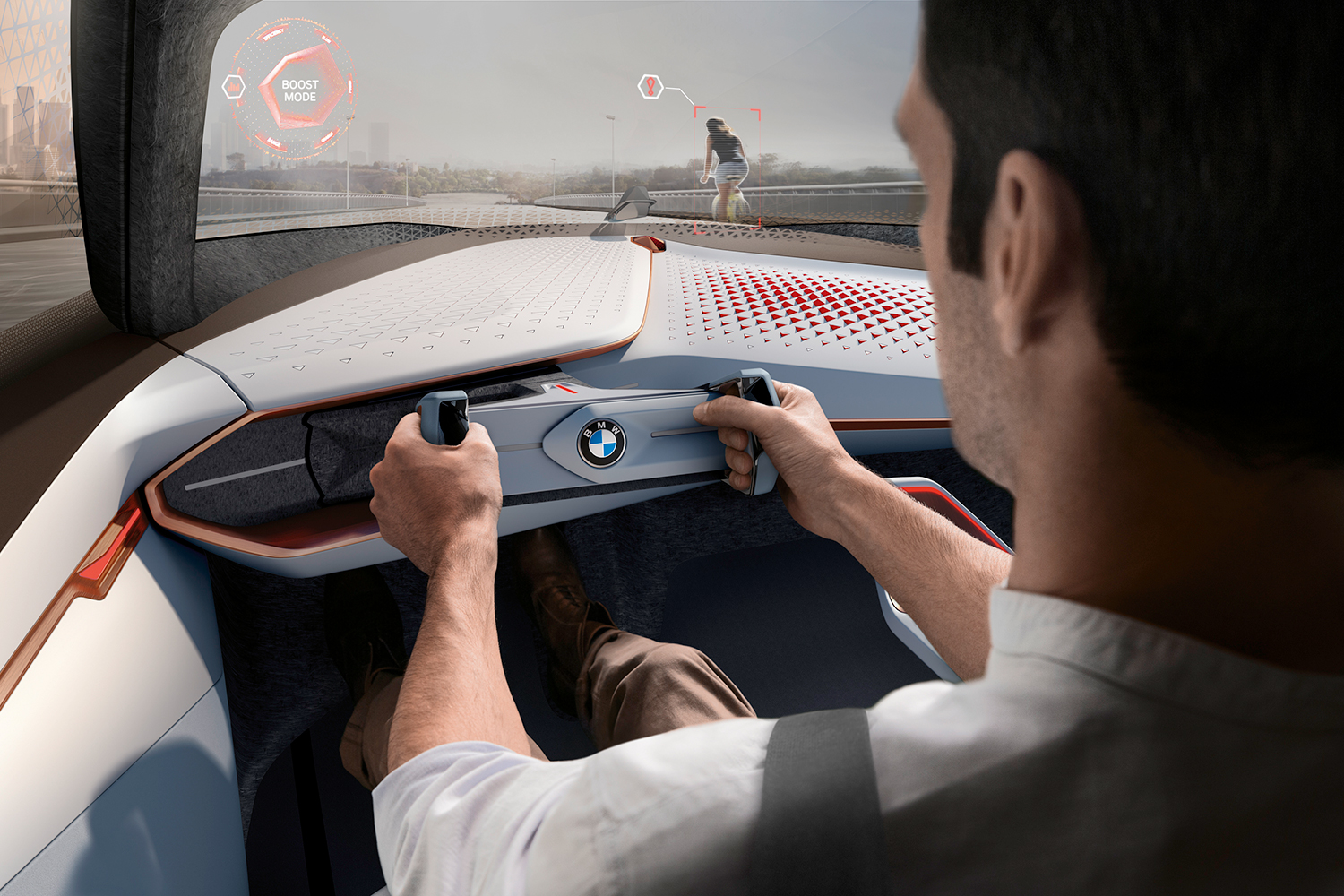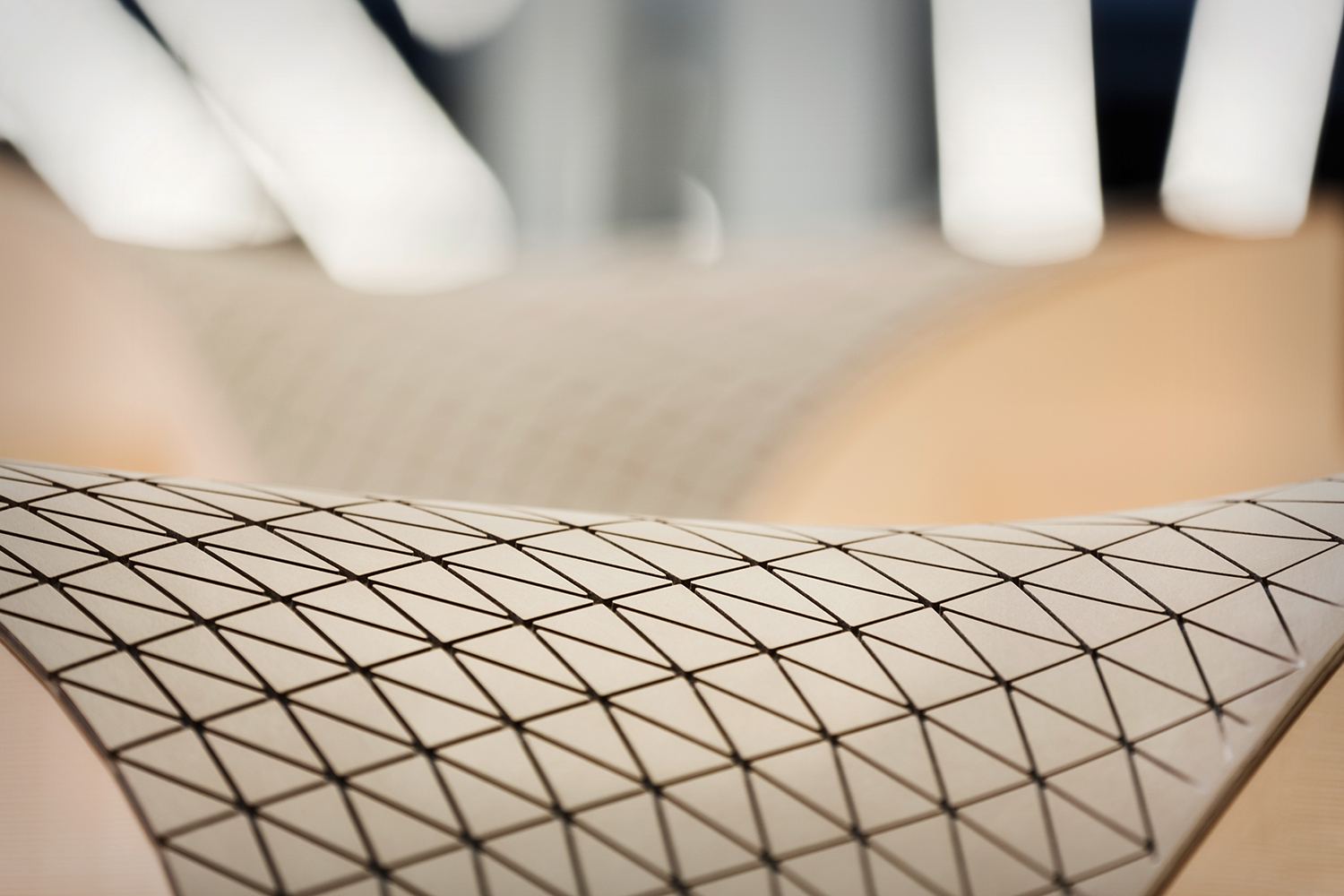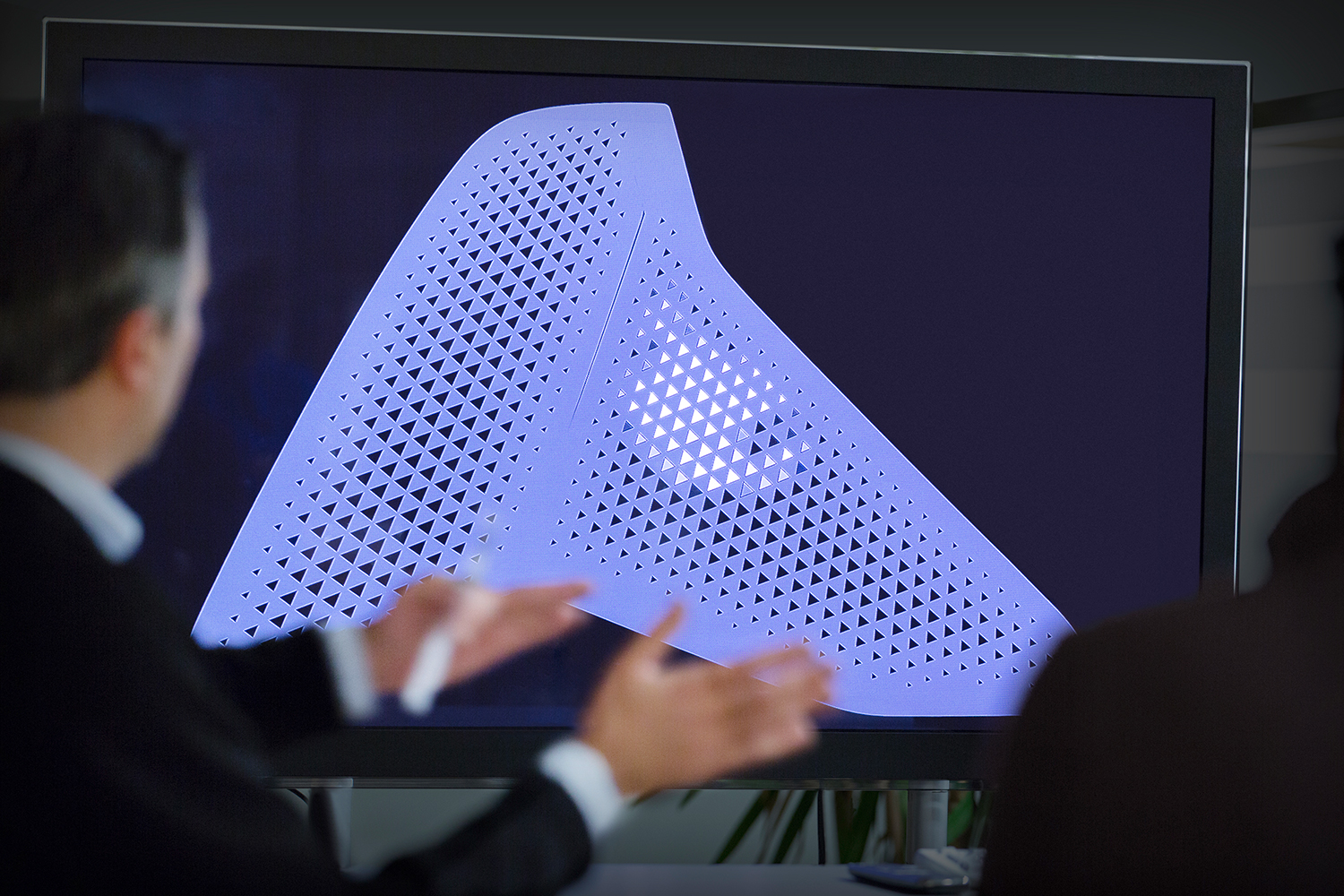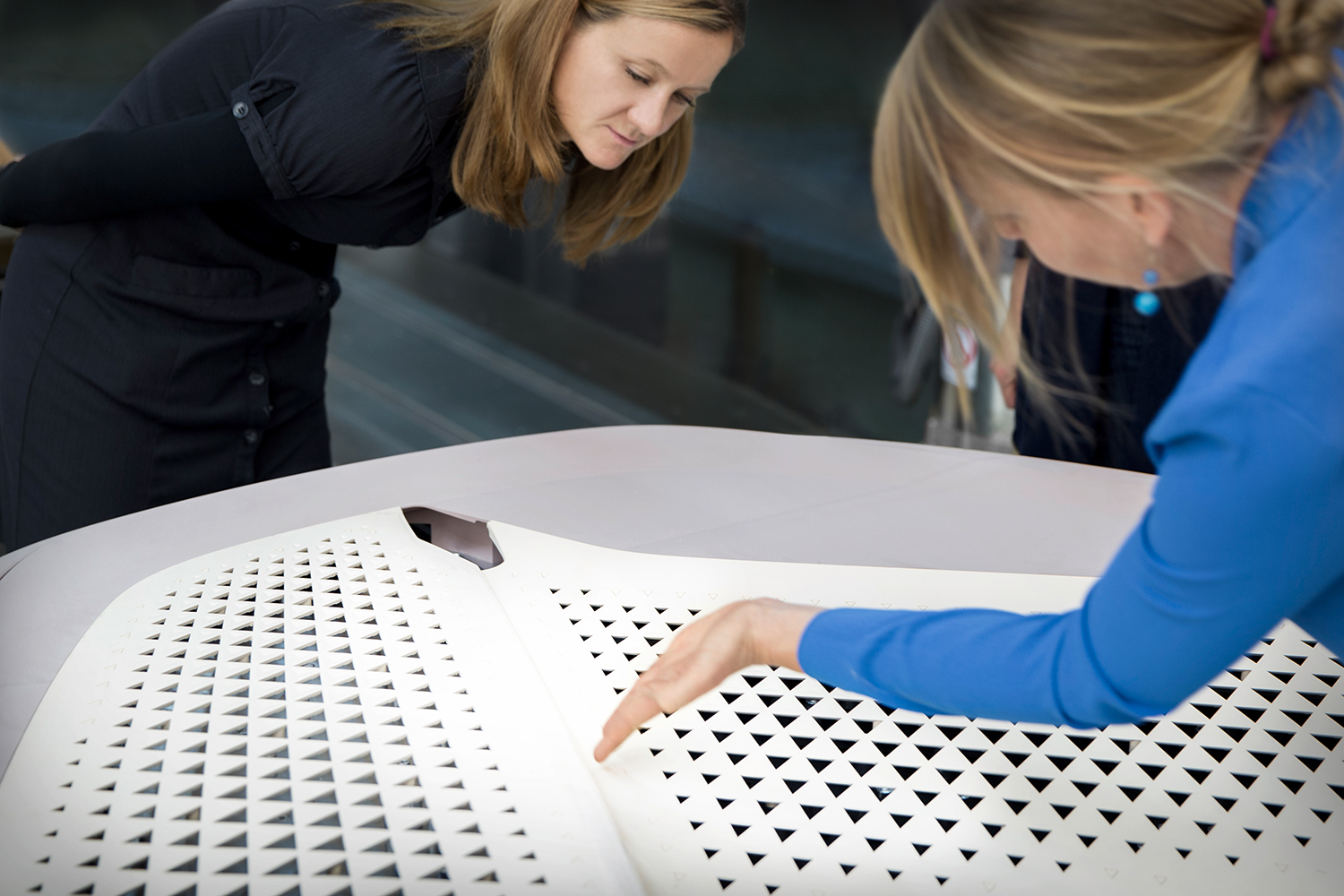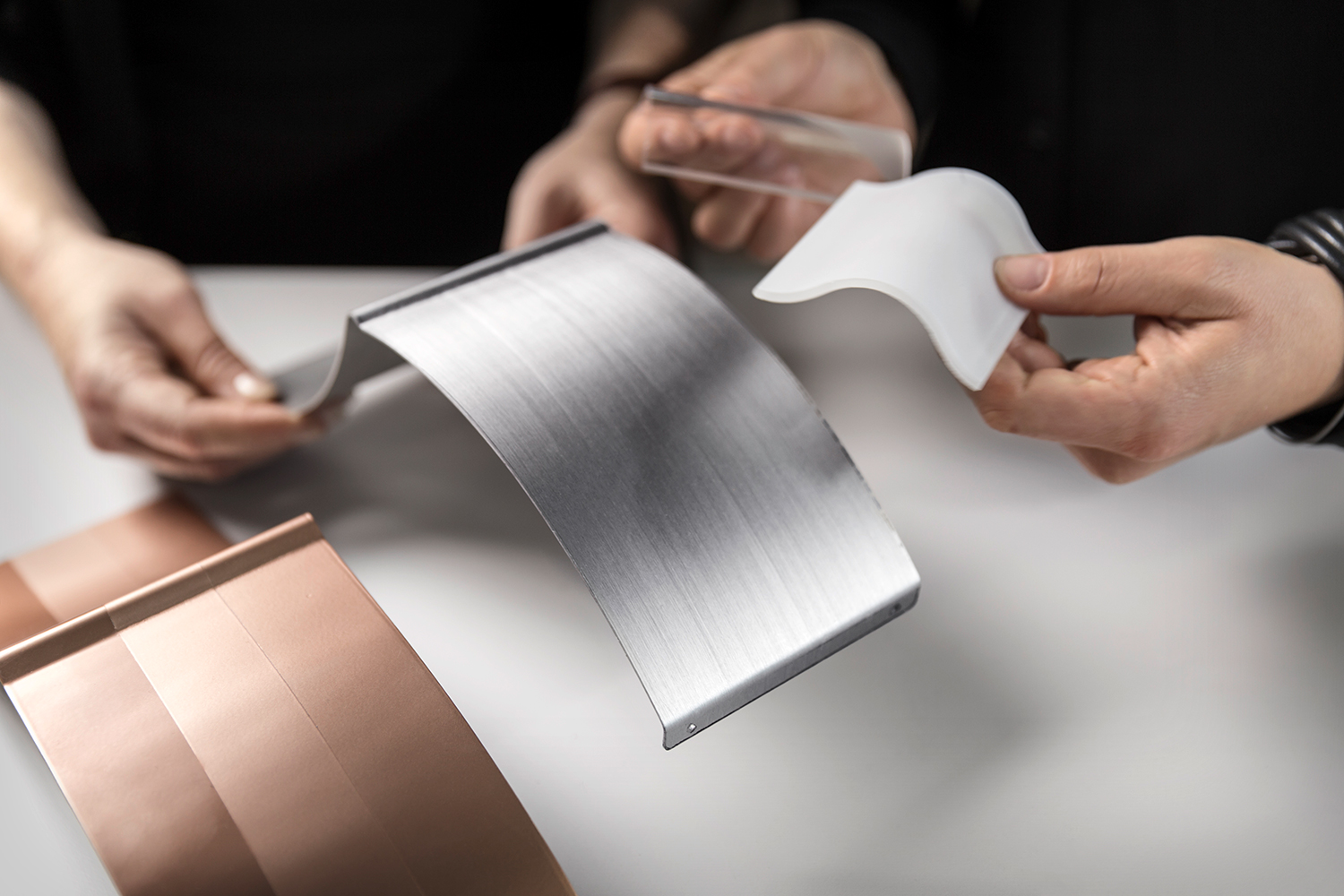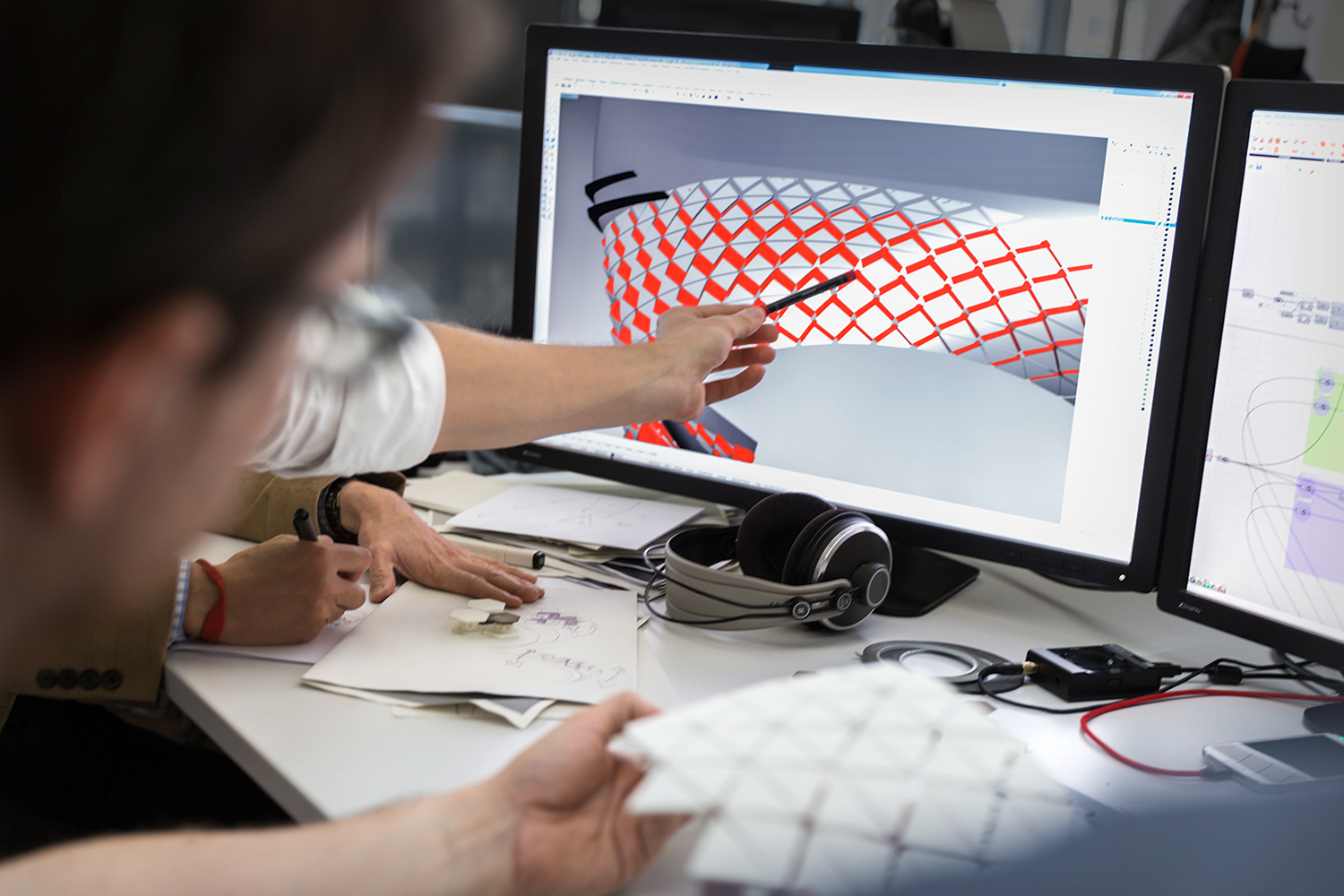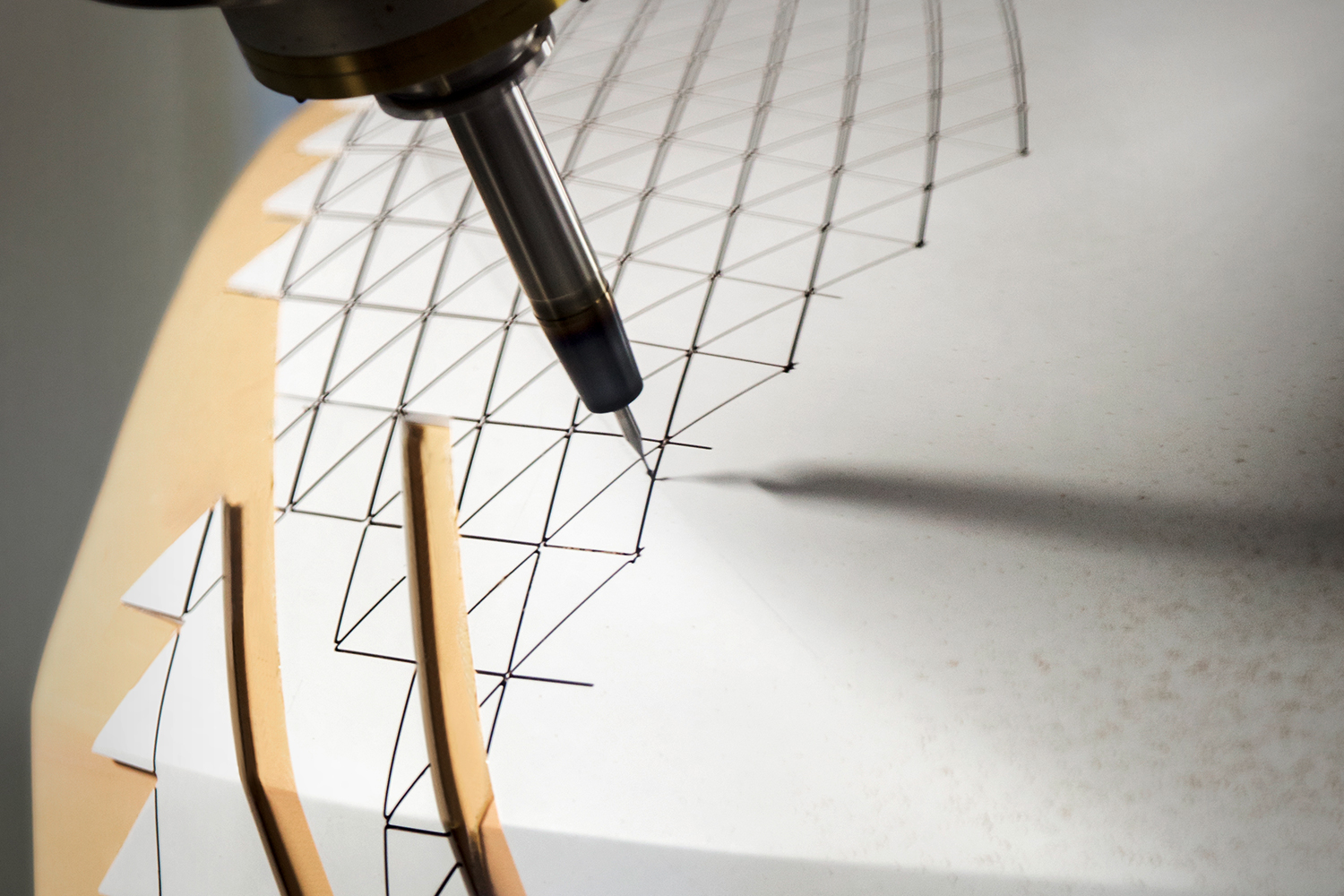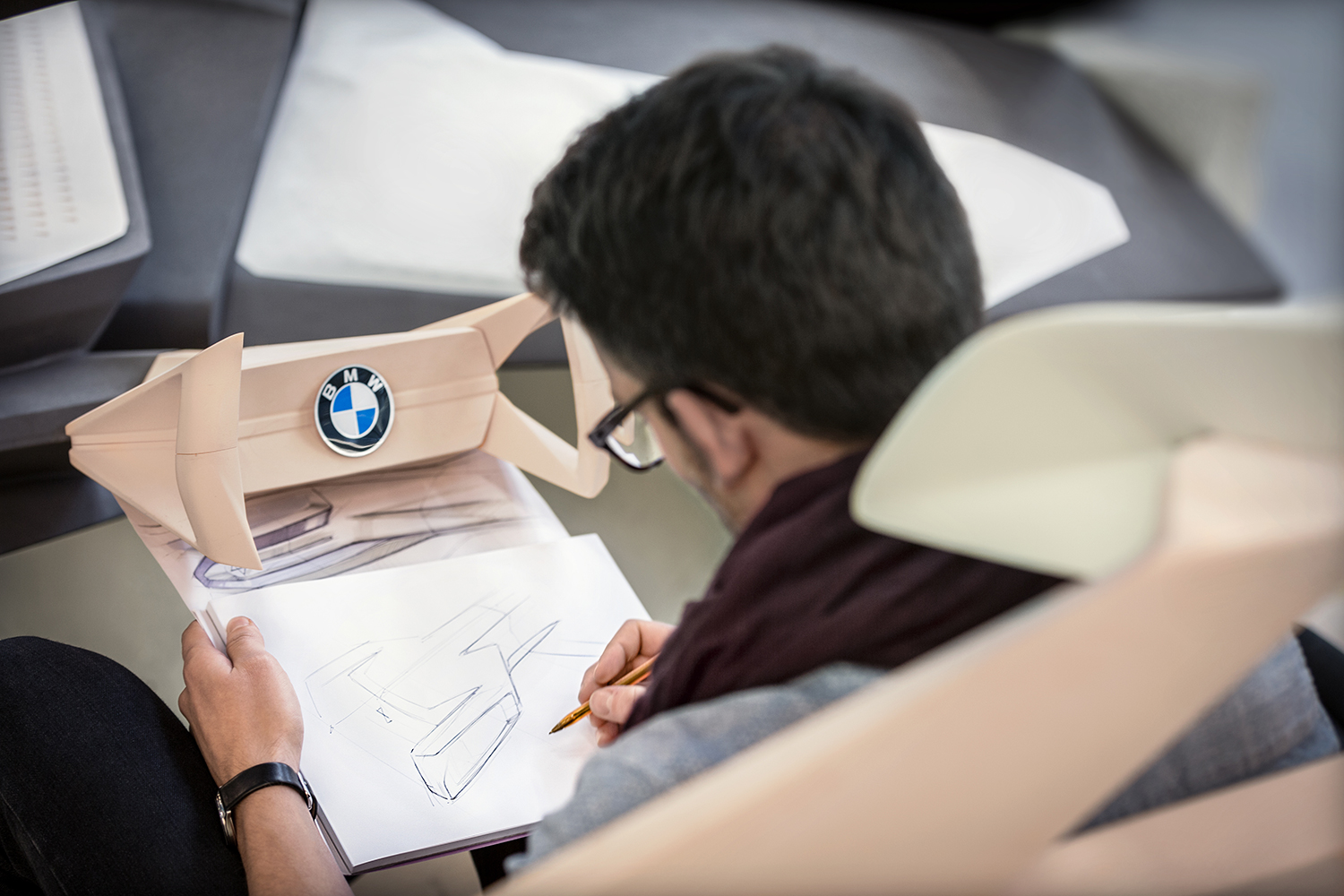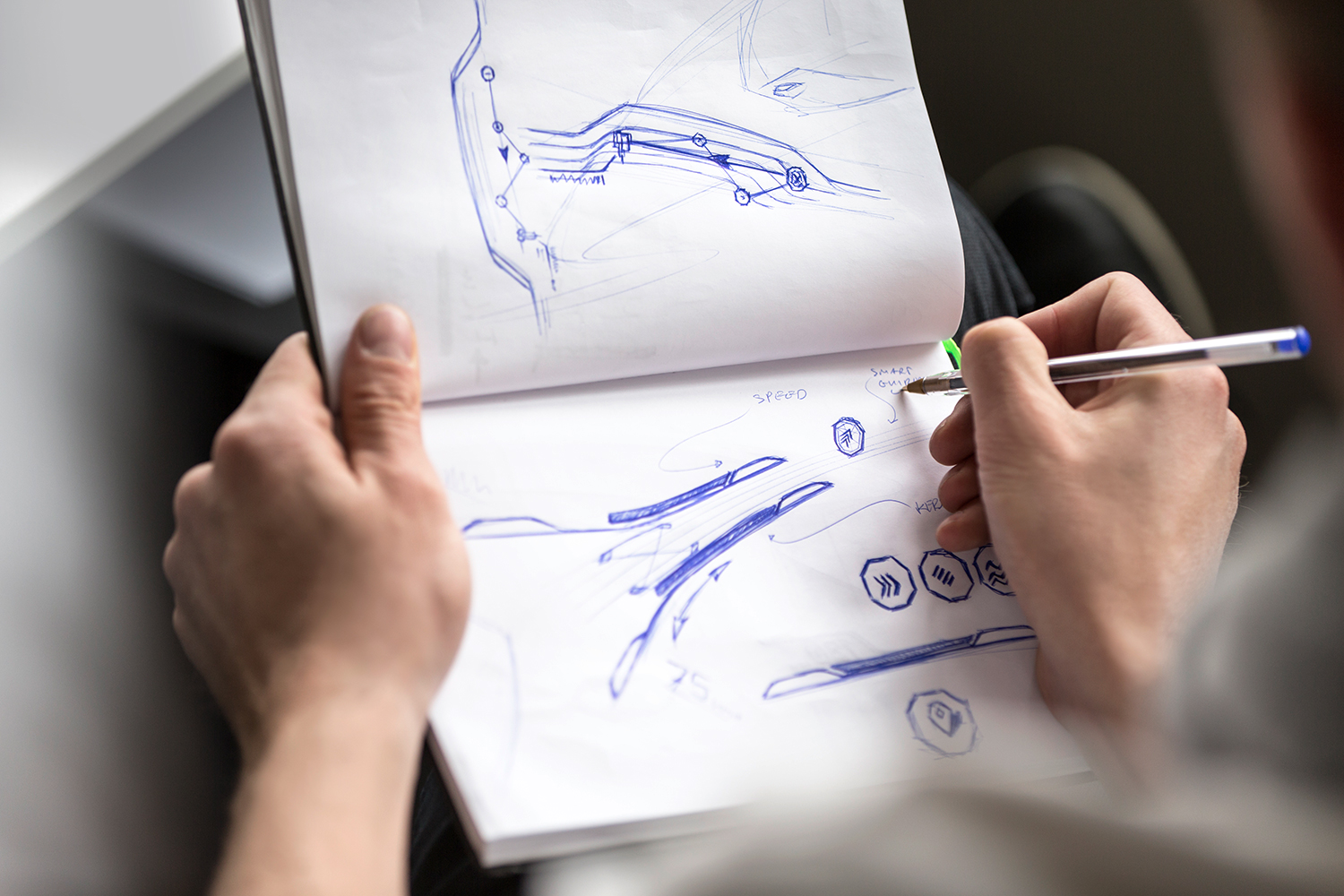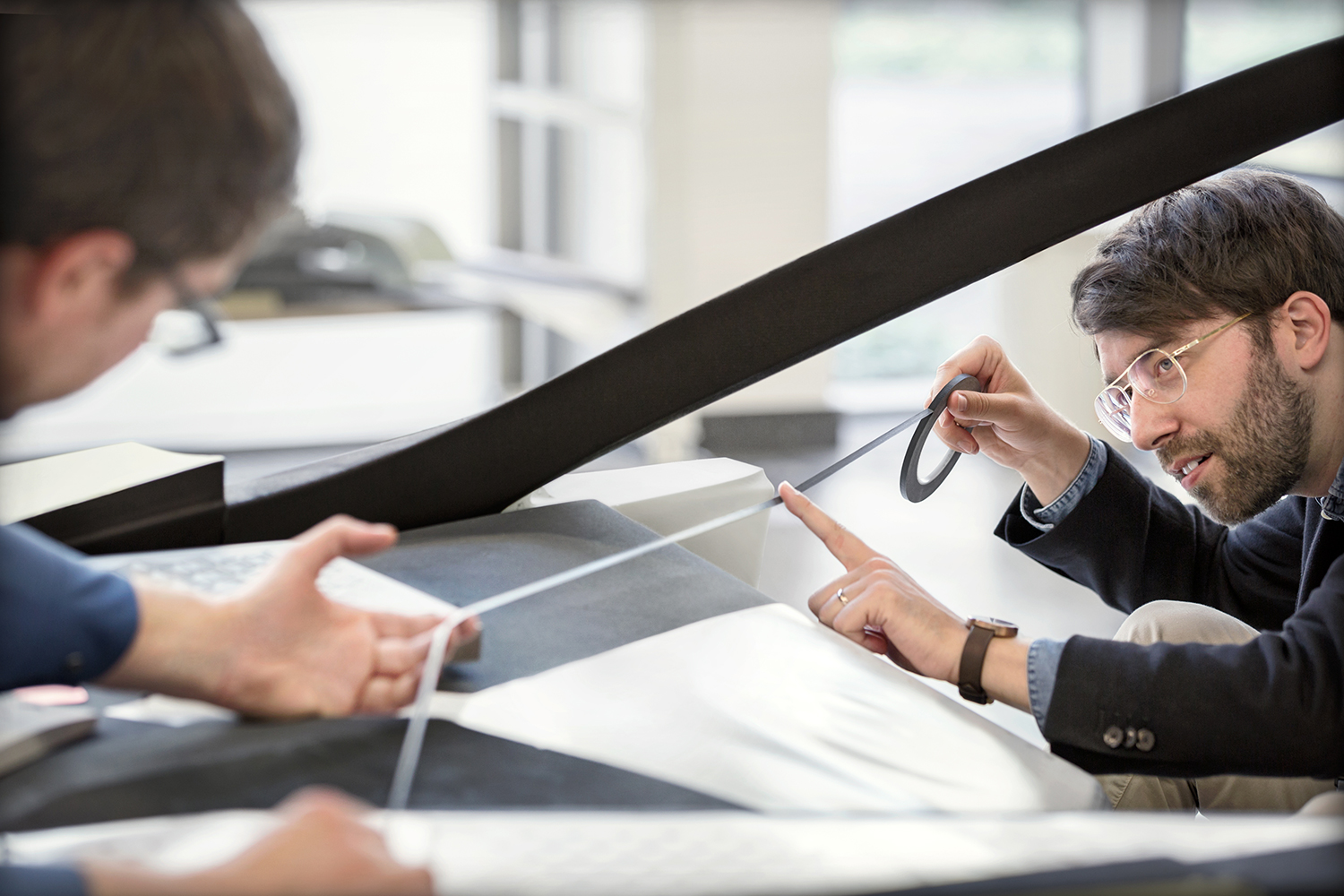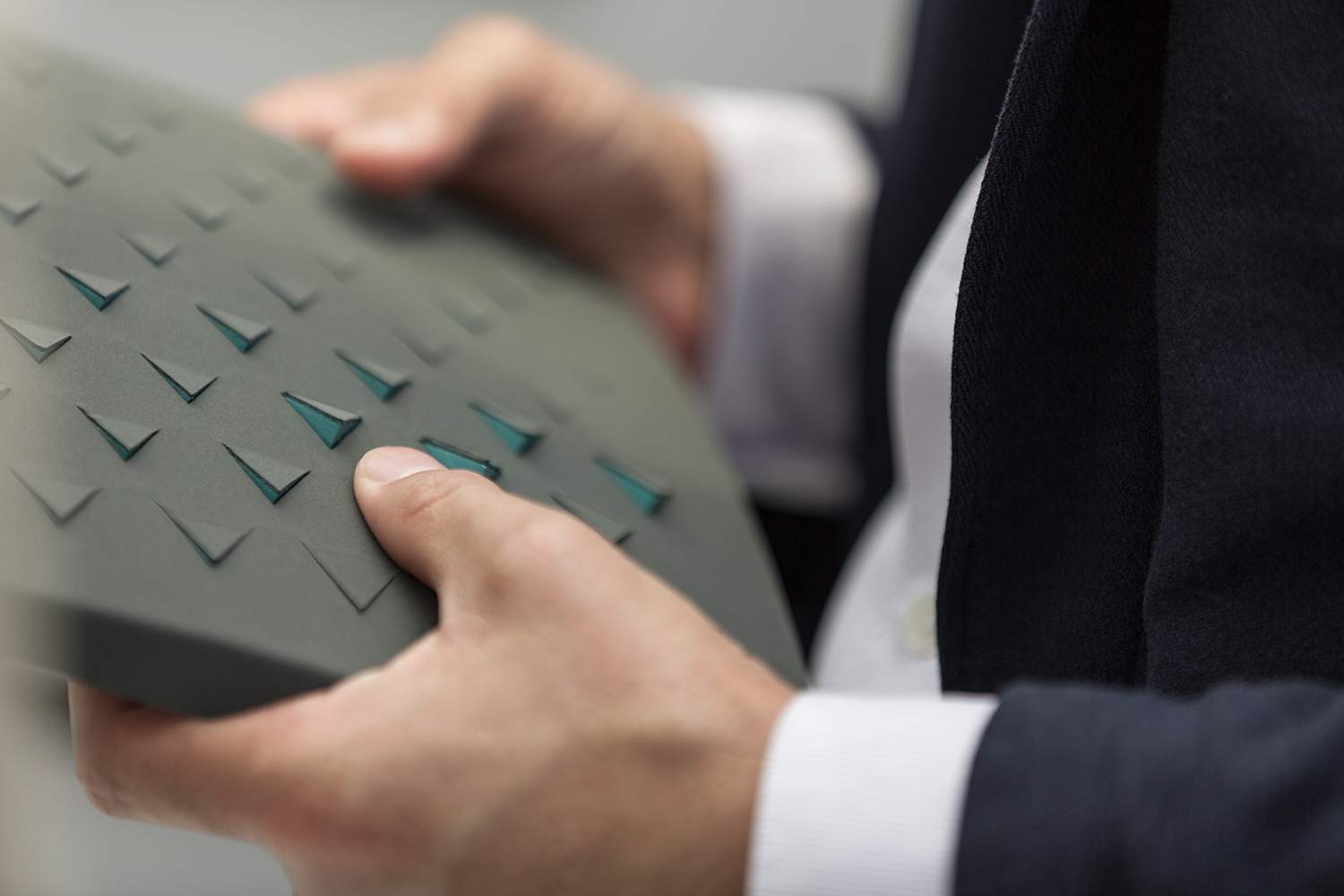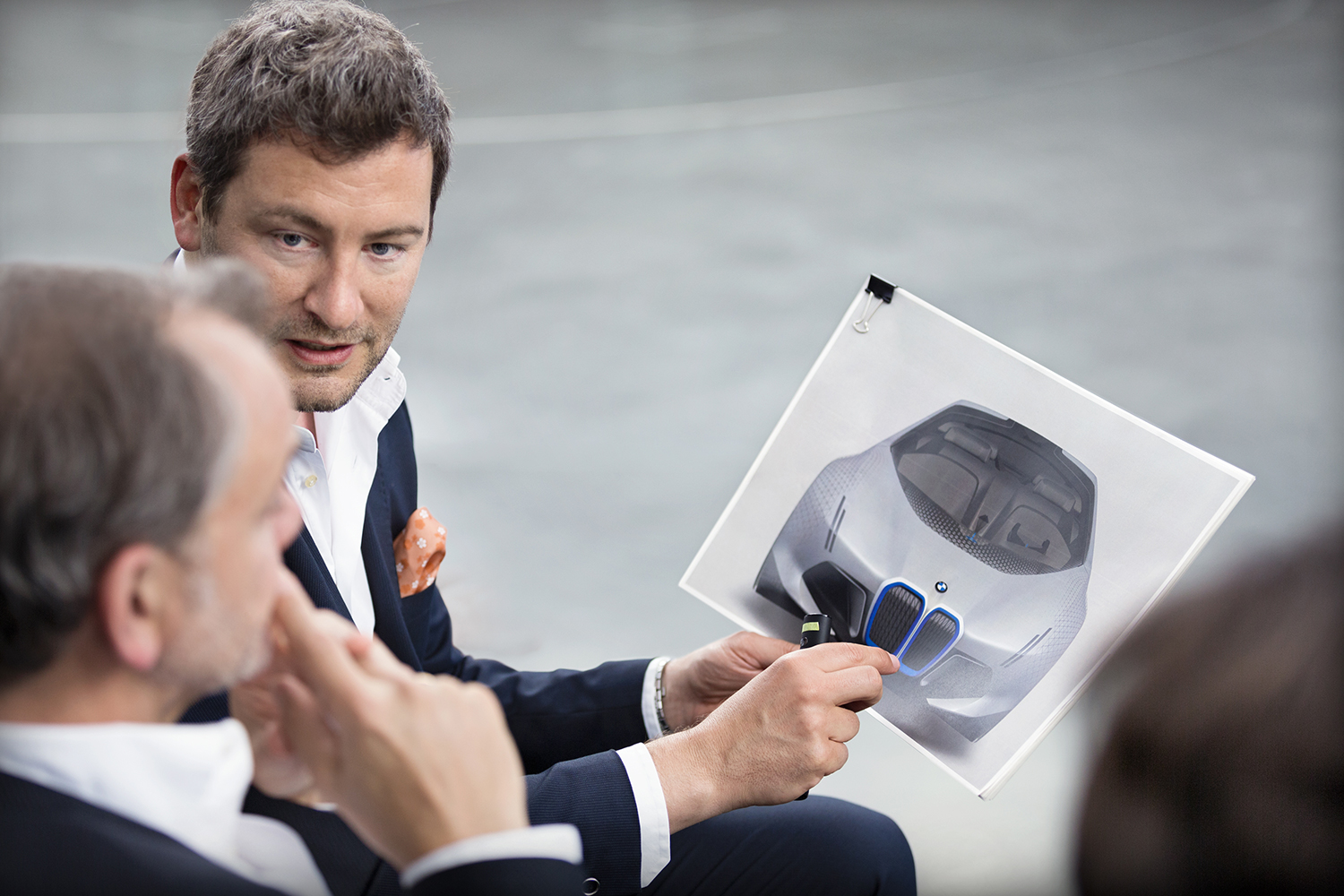Many expected BMW would celebrate its 100th birthday by introducing a retro-styled concept built as an homage to its illustrious heritage. However, the Munich-based car maker has taken an entirely different approach by developing a concept called Vision Next 100 that previews what the Ultimate Driving Machine of the year 2116 will look like.
Stretching 192 inches long and 54 inches tall, the Vision Next 100 boldly states that the imminent arrival of self-driving cars doesn’t signal the end of spirited driving. Instead, it blends the best of both worlds by offering state-of-the-art autonomous driving technology and the kind of pure, driver-focused handling that buyers expect from a car with a blue roundel emblem on the hood.
The Vision Next 100 was designed around the driver — literally. It offers two basic driving modes called Boost and Ease, respectively. In Boost mode, the driver is in complete control of the car, so the rectangular steering wheel pops out of the dash, the seat adjusts to a less laid-back position, and the center console tilts towards the driver. Vital information about the car and its surroundings is shown on a heads-up display that takes up most of the windshield. Notably, the Vision 100 isn’t fitted with an instrument cluster or with a touch screen for the infotainment system.
In Ease mode the steering wheel retracts into the dash, the seat merges with the door panel to help the driver relax, and the center console tilts away from the driver. The heads-up display still shows important information about the car and the road it’s on, but the occupants can also use it to play movies, to surf the Web, or to learn more about points of interest that the car is about to drive by.
A gemstone-shaped sculpture located in the middle of the dash lights up when the Vision 100 is in Ease mode to tell other motorists and pedestrians that the driver isn’t at the wheel. Similarly, the kidney grille, the headlights, and the tail lamps all change color depending on which mode the car is in.
The Vision 100 also ushers in a wildly futuristic tech feature called Alive Geometry that’s made up of nearly 800 moving triangles scattered across the instrument panel and the body panels. In Boost mode, the triangles change color to warn the driver of oncoming vehicles or obstacles in the road, and to highlight the fastest driving line — it’s like a digital driving school. In Ease mode, the triangles warn the passengers if the car is about to make a sharp turn or an abrupt stop so that they’re not caught off-guard — in this case, it’s like a digital backseat driver.
Full technical details haven’t been published yet, though company spokesman Cypselus von Frankenberg told Digital Trends that the concept is entirely emissions-free.
BMW predicts that, moving forward, it will be possible to manufacture far more complex cars thanks in part to a process called 4D printing — the fourth dimension being “functionality.” The Vision 100 illustrates this with flexible bodywork that keeps the wheels covered even when they’re turned, and fabrics made using recycled or renewable materials. The copper-colored concept is nonetheless instantly recognizable as a BMW, and it boasts an impressive drag coefficient of 0.18. In comparison, the ultra-sleek Tesla Model S has a drag coefficient of 0.24.
Read More: Apple Car breakdown: BMW and Daimler walk away from development talks
Unsurprisingly, the Vision Next 100 is merely a design study built to showcase what BMW’s research and development department can dream up. It won’t hit the road as-is, but many of the high-tech features built into it will trickle down to series-produced BMWs over the next couple of years.
